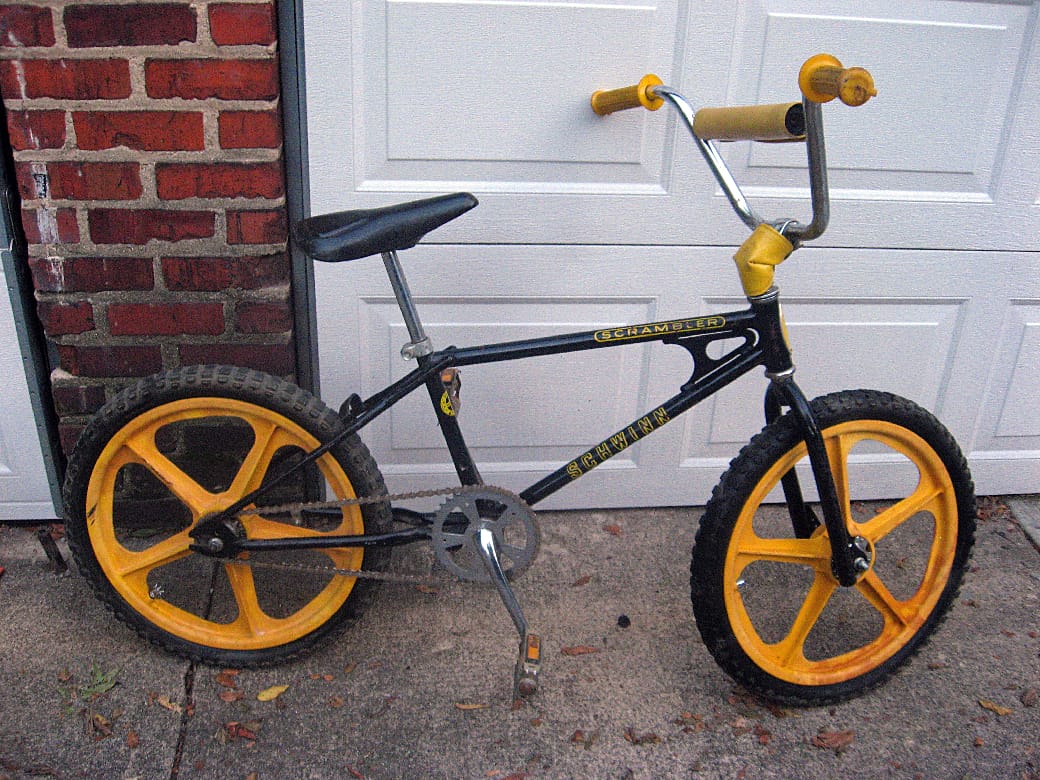Sometimes we ride 4, sometimes we ride 2.
Miki Vuckovich
Early 90s at the RAI skatespot in Amsterdam, is where I first met Miki. He was shooting a photo of Pieter Janssen for a TransWorld SKATEboarding Check Out article. What struck me was his laid-back demeanour. Fast forward to 2014, Encinitas CA. We're both riding the Belgian Waffle Ride. Miki finished the 160km ride in 12 hours, long after everyone was gone. Good to see Miki still has that same laid-back approach 😉.

How did you get into skating?
1980, San Jose, CA. Started with a hand-me-down from my oldest brother. Bearings were completely seized, but pushed around on it anyway. Skateboarding was huge in the late 70s, but had died by then. But something about it appealed to me and a couple friends of mine. We definitely weren’t the cool kids at school.
Eventually found my way to Winchester Skatepark in Campbell, and I knew I’d found my place and my people. Then Winchester closed summer of ’81. I was devastated. But life went on.
Street skating and backyard pool hunting became the only alternative. The failure of the 1970s skateparks essentially criminalized skateboarding. To continue skating meant you were trespassing pretty much anywhere you wanted to skate.
What about the cycling thing?
Before I skated, I rode a Schwinn Scrambler BMX bike (Tuff Wheels, Ashtabula forks, Tuf-Neck stem, etc.). Mainly for transpo, to get to school and soccer practice. There were some DIY BMX tracks through the orchards in my neighborhood. I’d ride those a lot, but never did proper BMX races.
Around ’79 a friend and I found an abandoned build site of a skatepark that was never finished. They’d dug out the bowls, but never laid any rebar or poured any concrete. So, we would ride that on our bikes, carving around the rough dirt bowl, the long half pipe, and other sections. That may have planted the seed for skating.
How many boards you think you gone through? And what are you currently skating?
I’ve never been super hard on my boards. I probably average three or four boards a year. So, skating for 35 years or so, that’s about 130 or so boards. Plus I have other boards, an old longboard, A Fibreflex slalom board, etc. Those don’t really wear out.
That’s a strange question. It’s like asking how much food have you eaten in your lifetime? (A: The same amount I’ve shat.)
Ok then, how many bikes do you have?
In my case, n=4.
My first build project was an old French Jeunet touring frame that I set up with a 46t Velo Orange single crankset, 27-inch wheels from Velo Cult (when it was still in San Diego), reverse-caliper brake levers on messenger bars, and a cushy Brooks saddle. That bike has since morphed into a rando setup with a Stronglight drillium triple crankset, classic rando bars with shellacked cotton bar tape, downtube shifters, etc. Pretty much Eroica-ready! I use that one to commute to the skatepark.
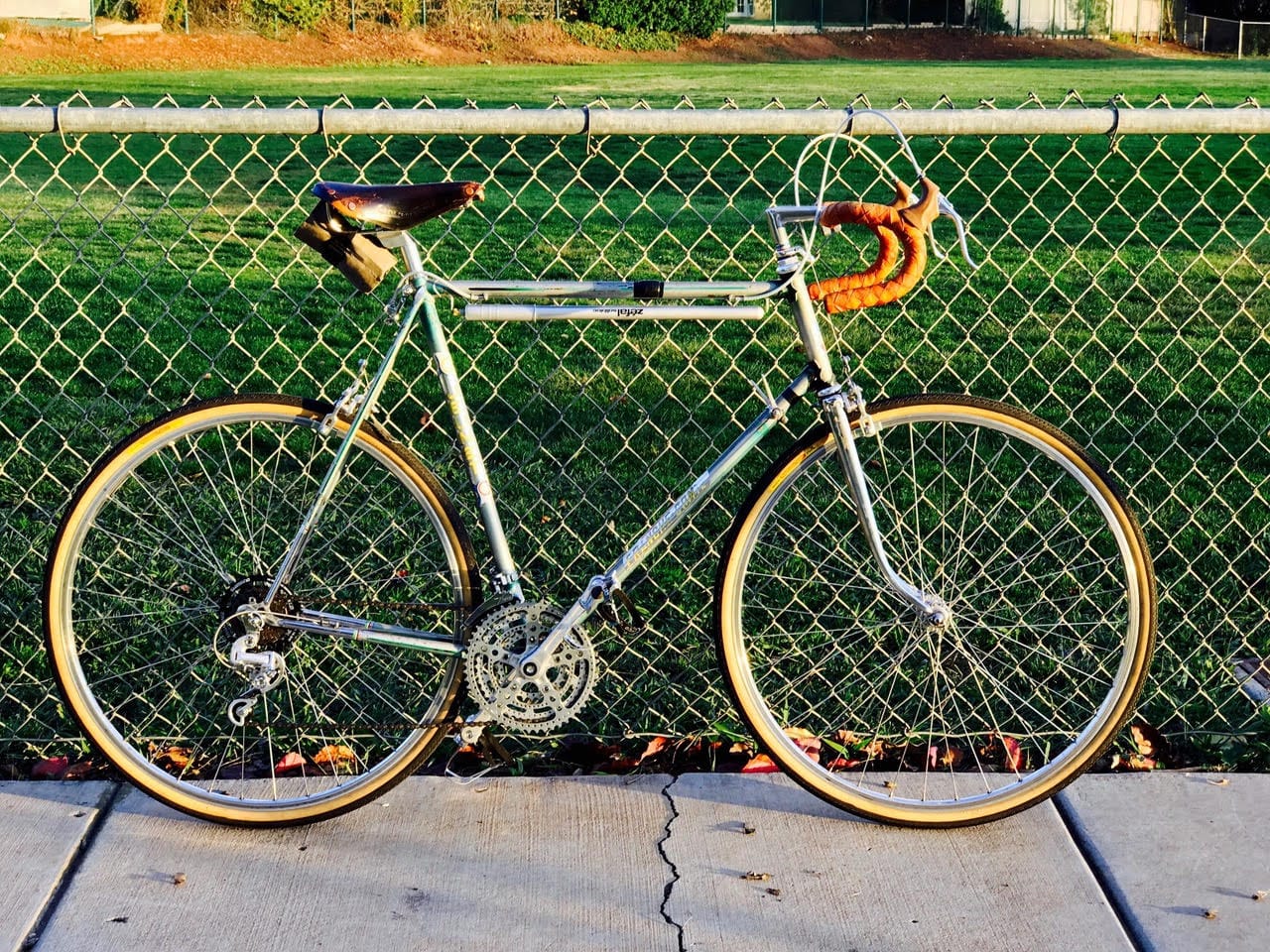

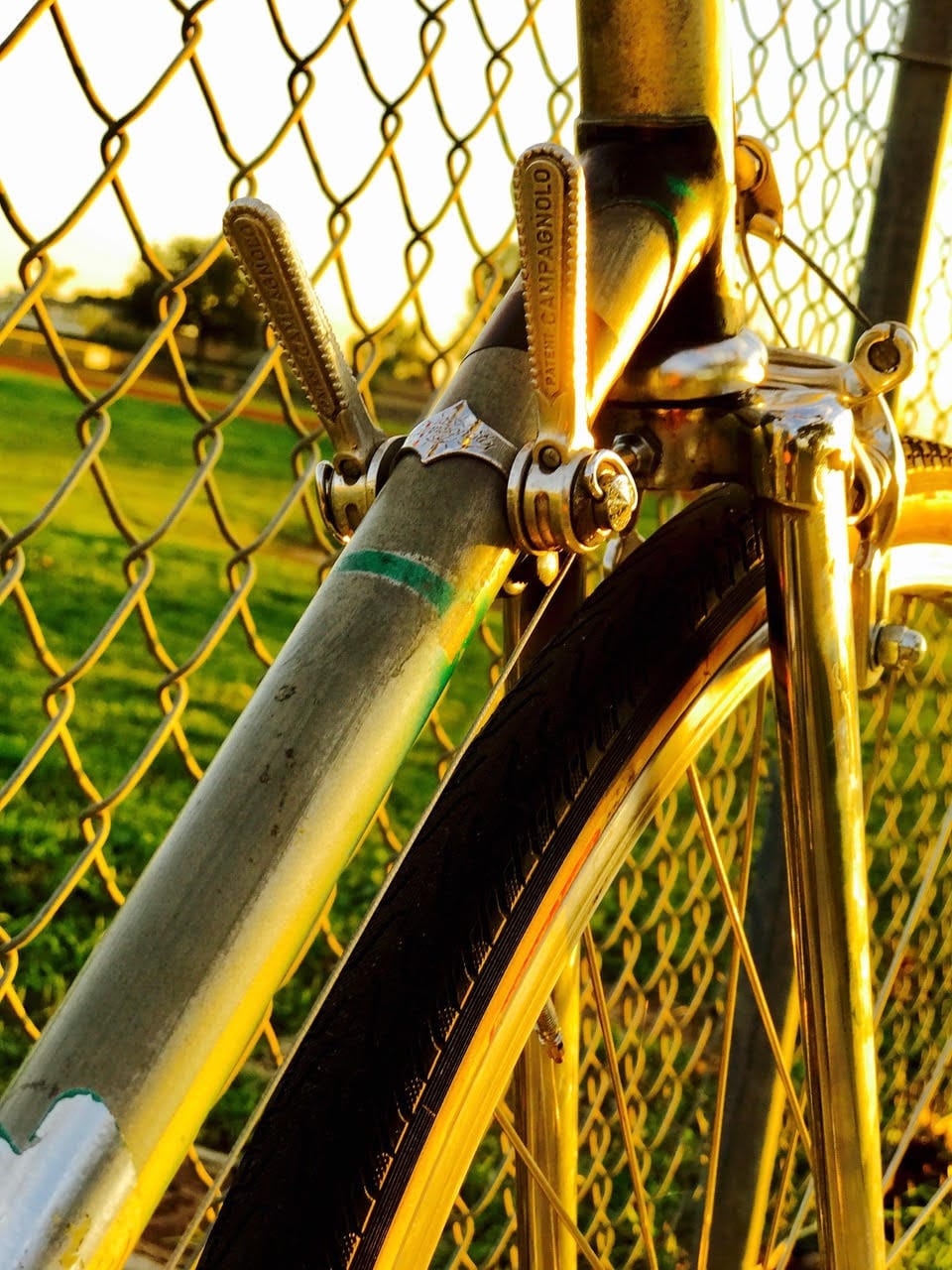
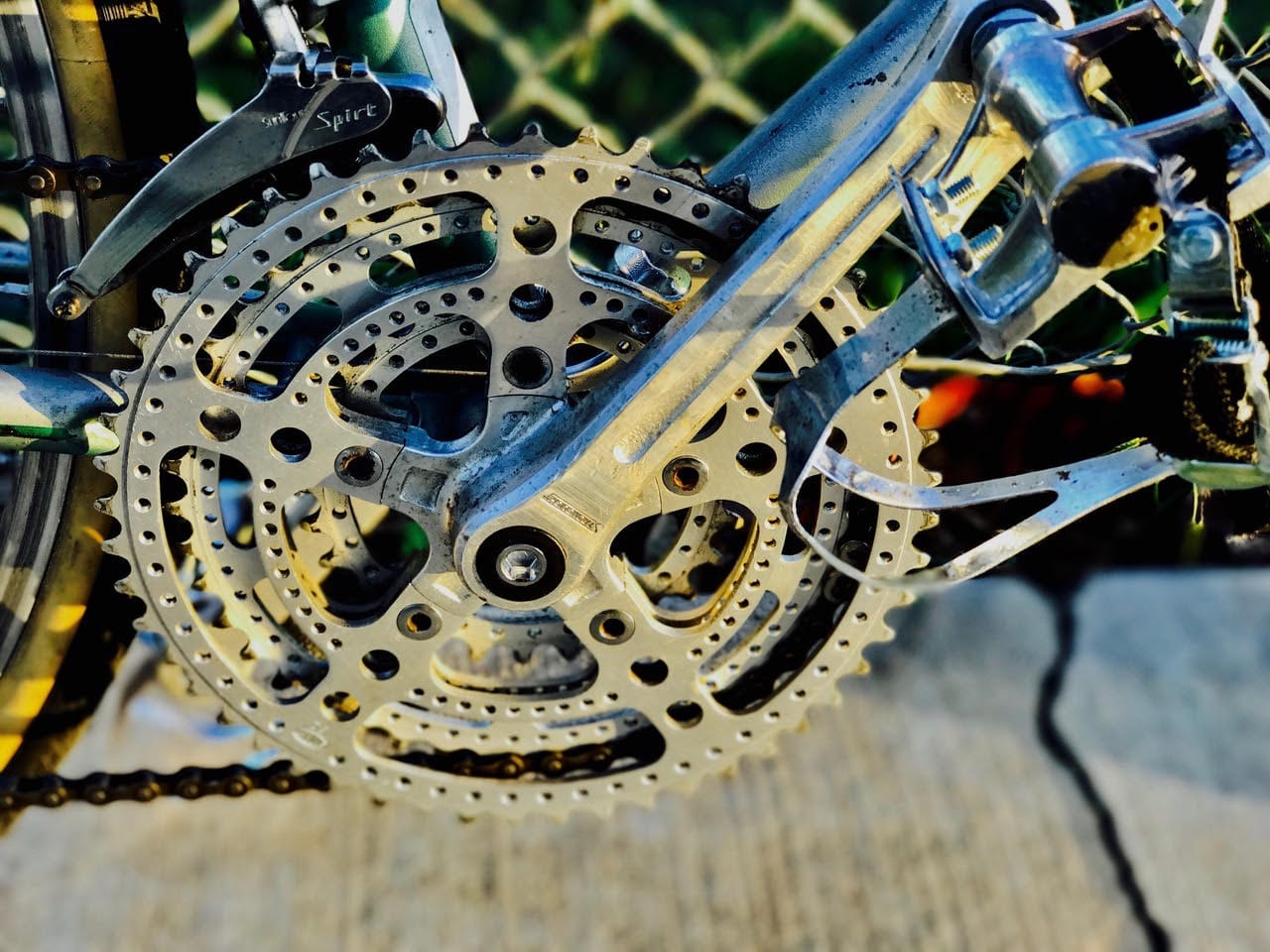
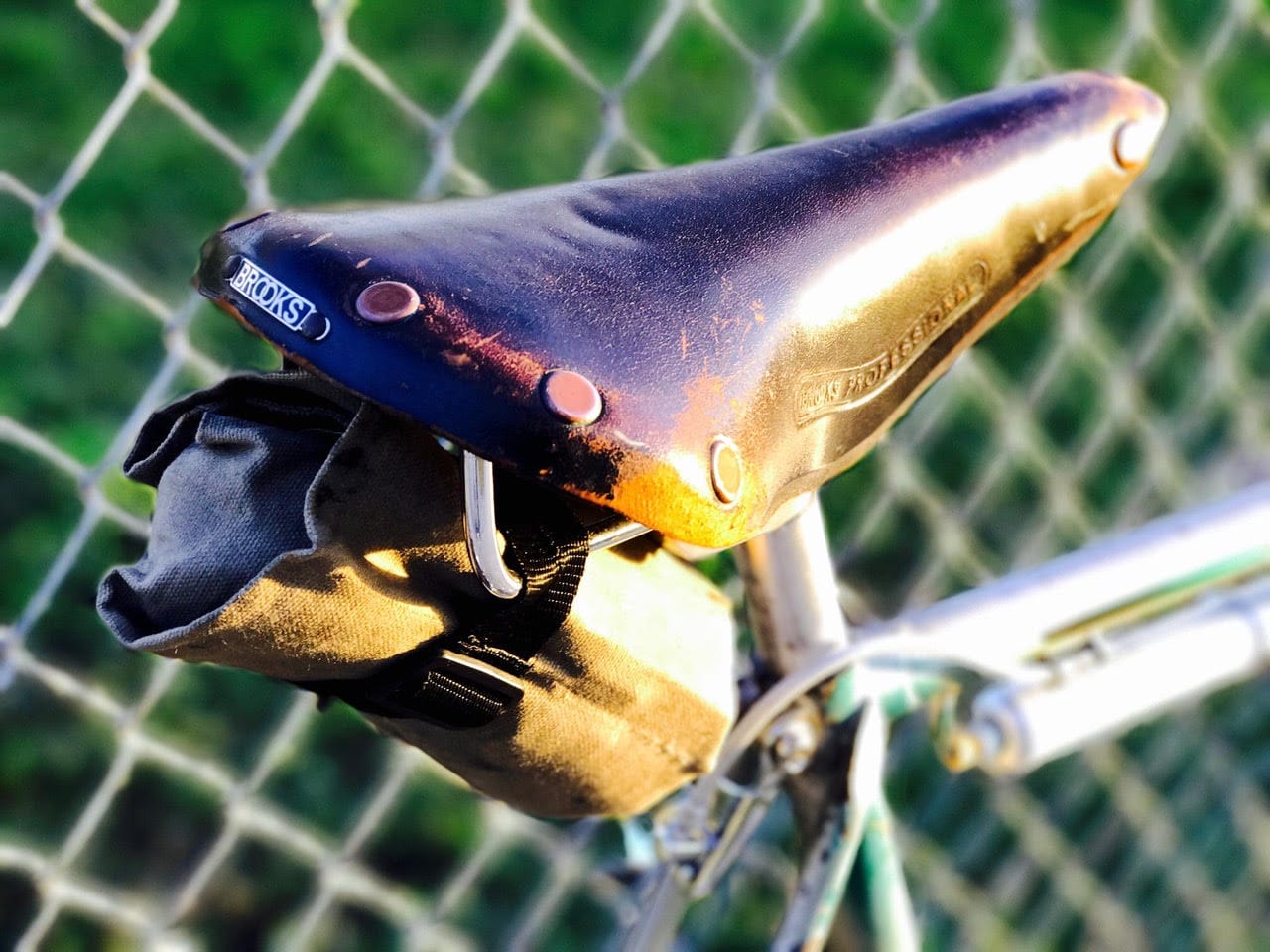
These days I mostly ride my Santa Cruz Stigmata. Technically, it’s a cyclocross bike, but I’ve set it up with a Fizik Antares saddle, Zipp post, bars, and stem, SRAM Red hydraulic disc brakes, SRAM/Quarq 1x cranks (46t), SRAM Force 1 derailleur, and have two sets of wheels laced up with the same hubs and 10-42 cassettes — WTB rims on DT Swiss 350 hubs with Schwalbe X-One 32c tires for racing CX, and HED Belgium rims on DT Swiss 350 hubs with Hutchinson Sector 28 tires for the “road.” I use that term loosely, since a good Sat. morning ride will include a dose of hardpack trails, too. Both wheel sets are tubeless.
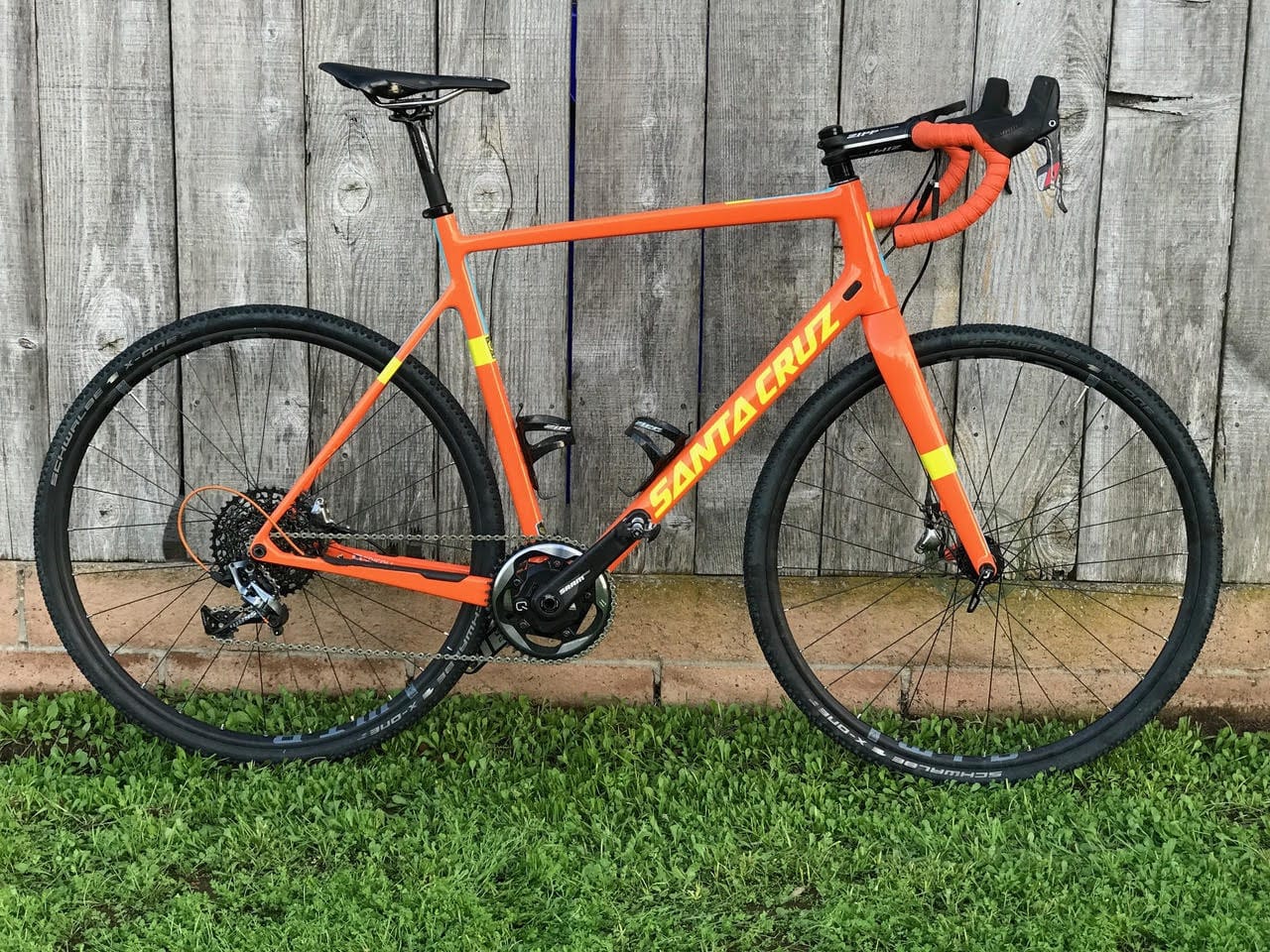
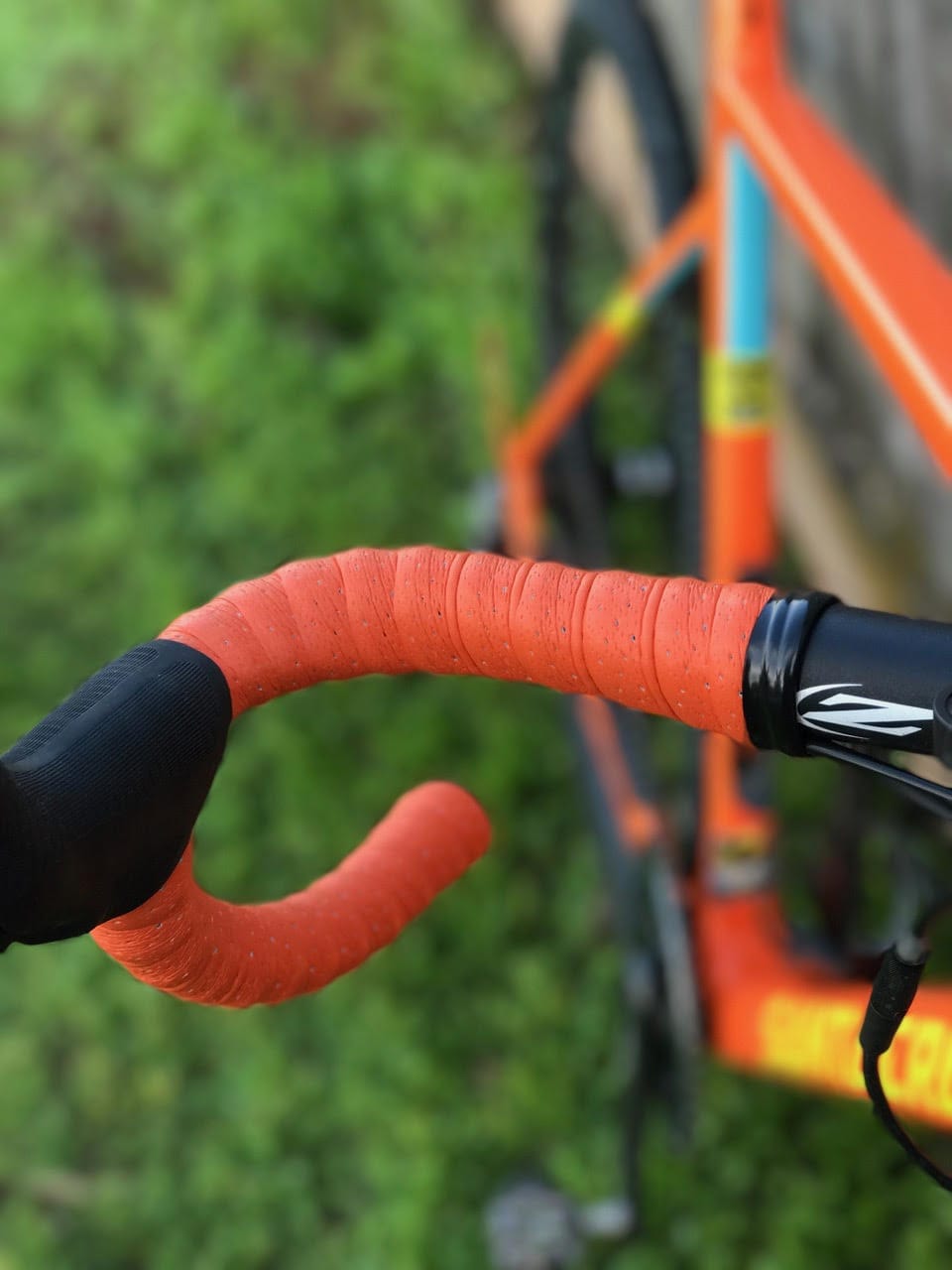
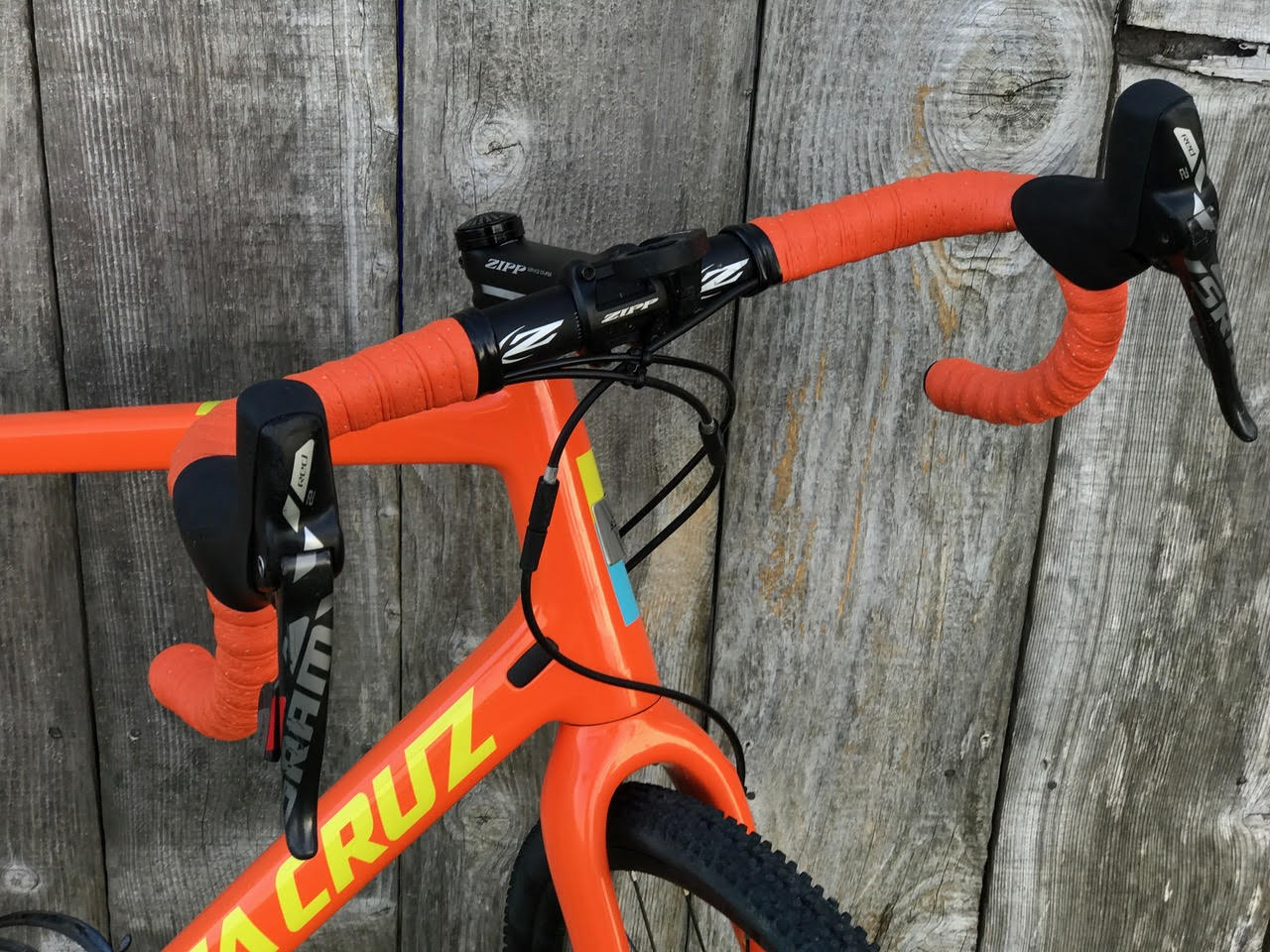
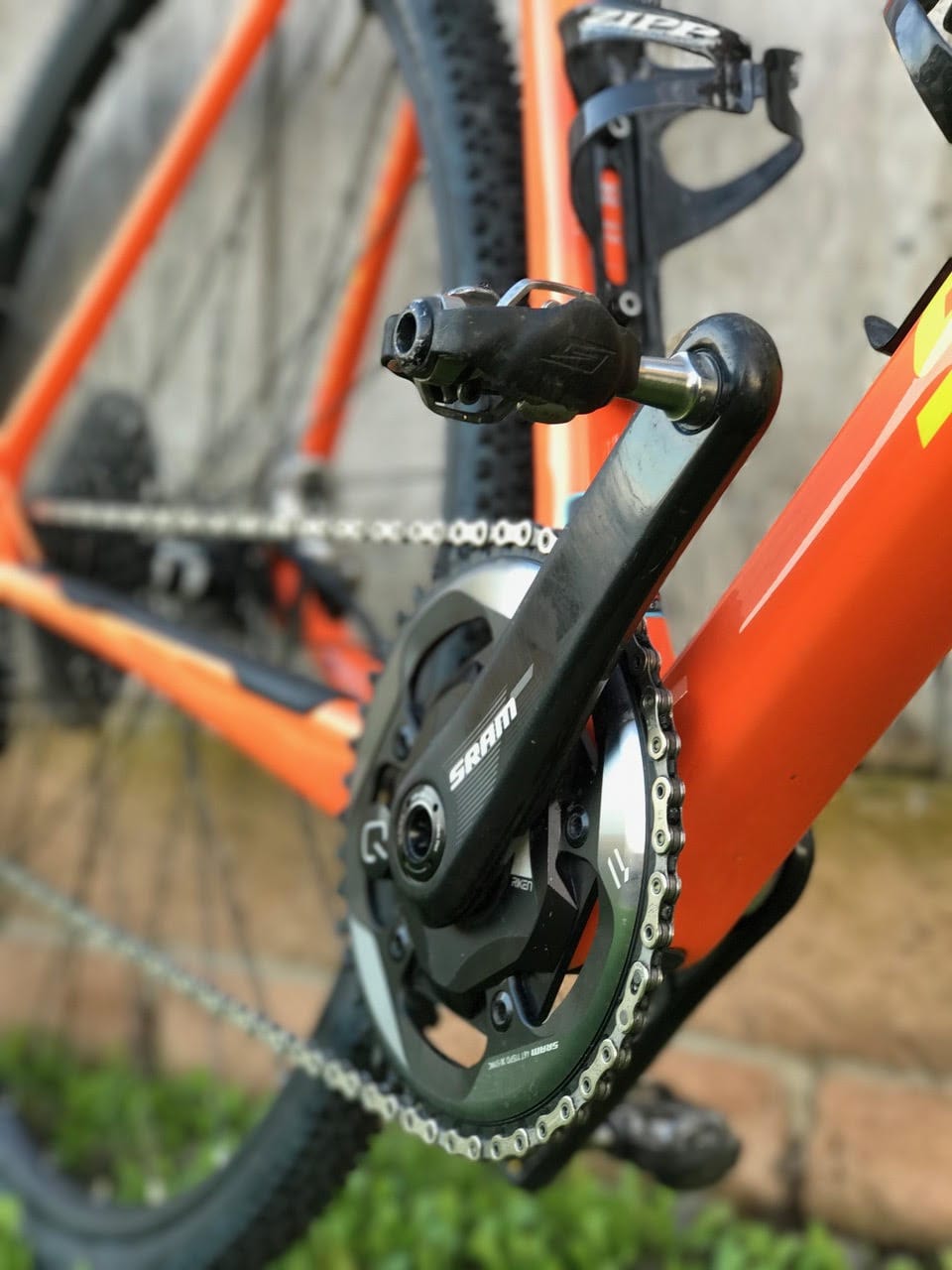
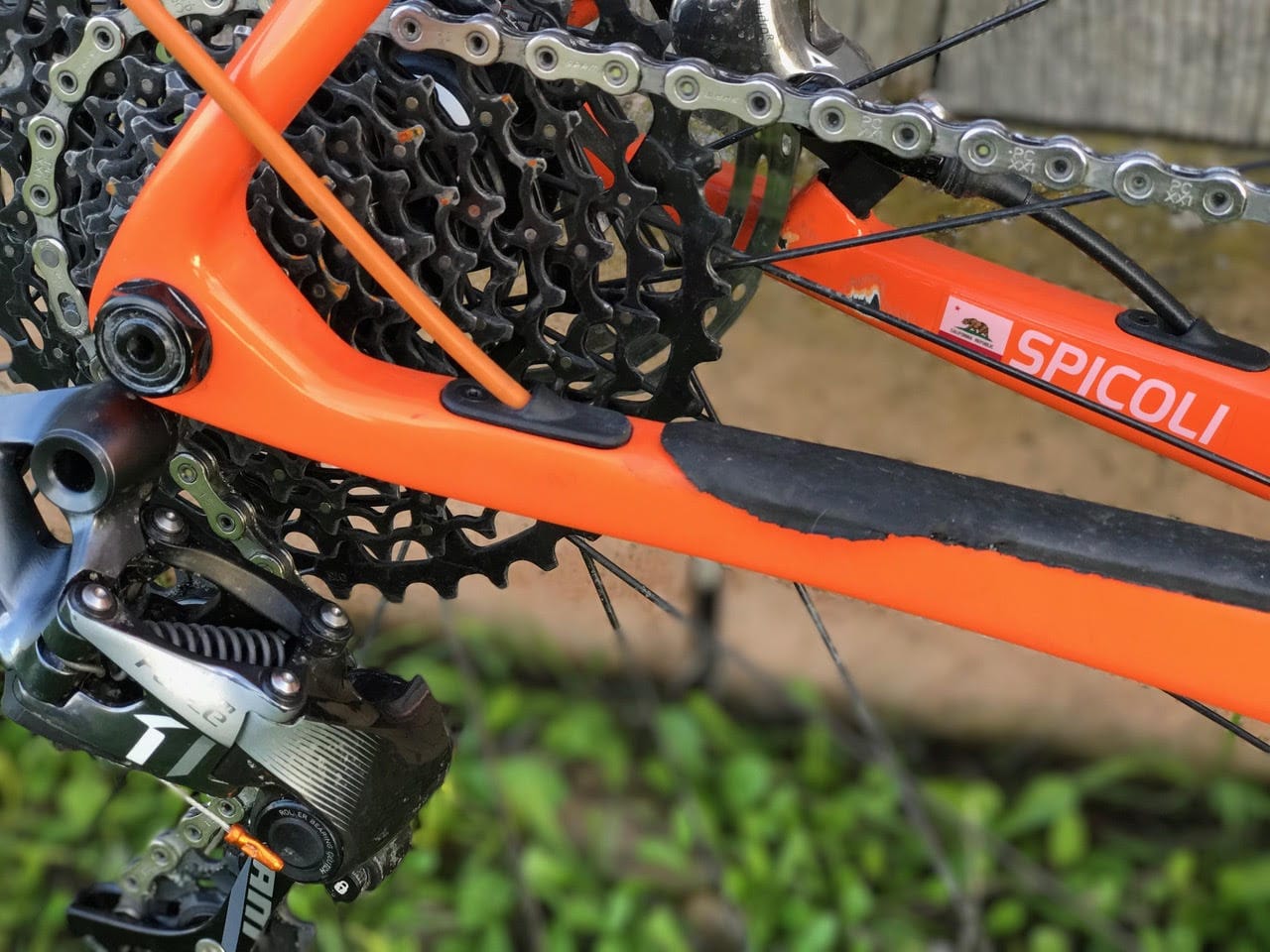
The Stigmata is great because it’s really just a “bike,” meaning that it’ll do just about anything. It’s best for CX, but I’ve also raced it in the road, in crits, time trials, and even mountain-bike races (though it was a little rough there). My Stigmata’s raced everything but track.
For that I have a Masi Speciale Sprint, a steel track bike with an old Campy Record Pista crankset (49t), Campy Record Pista track hubs (14t cog) laced to Campy Omicron box rims, a nylon Cinelli Unicanitor seat, and chrome Nitto track stem and bars (wrapped in black cotton bar tape). Not the lightest or most aero track machine, but until its recent resurfacing, the San Diego Velodrome wasn’t exactly somewhere you were prone to break any records.
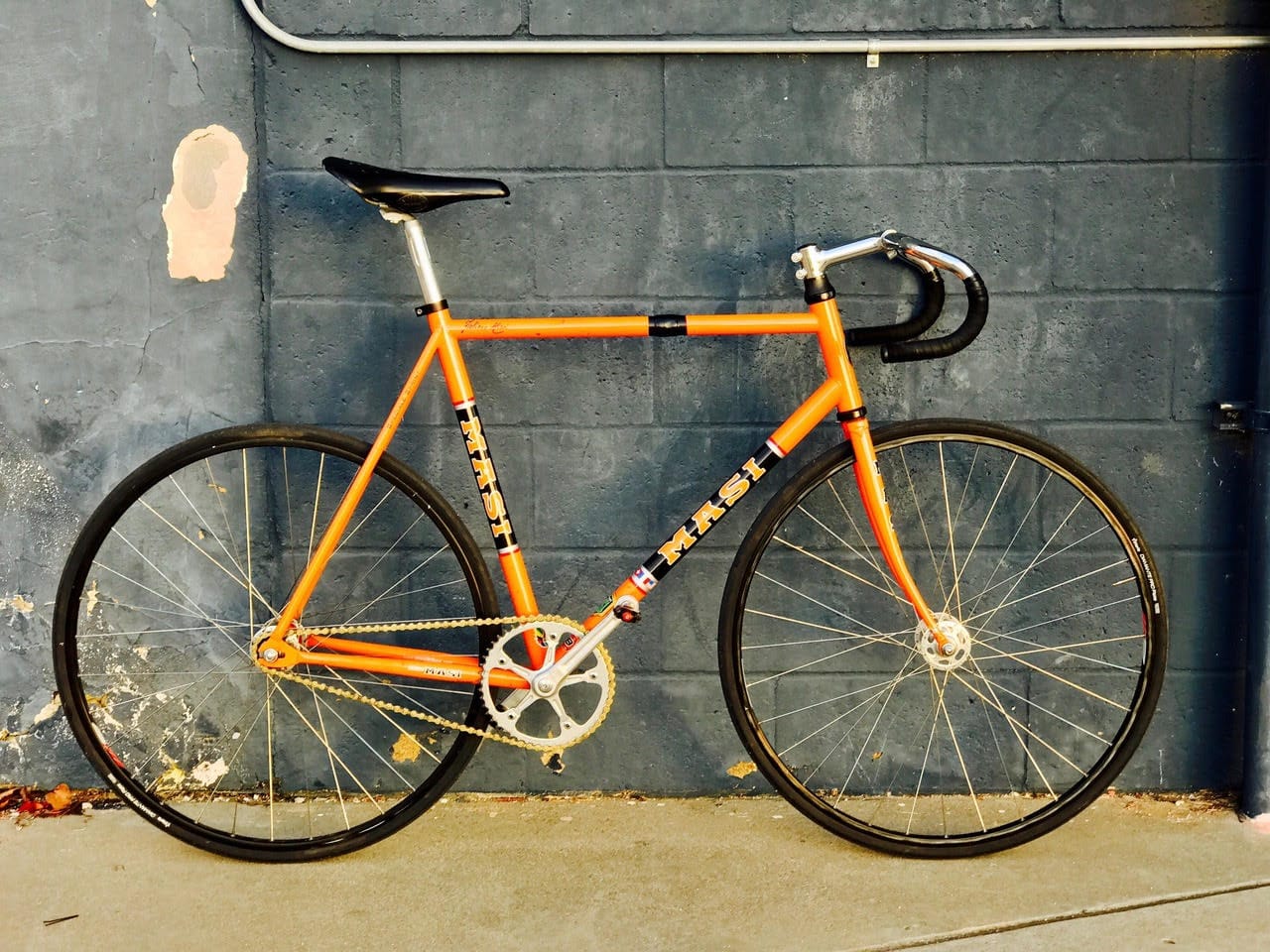
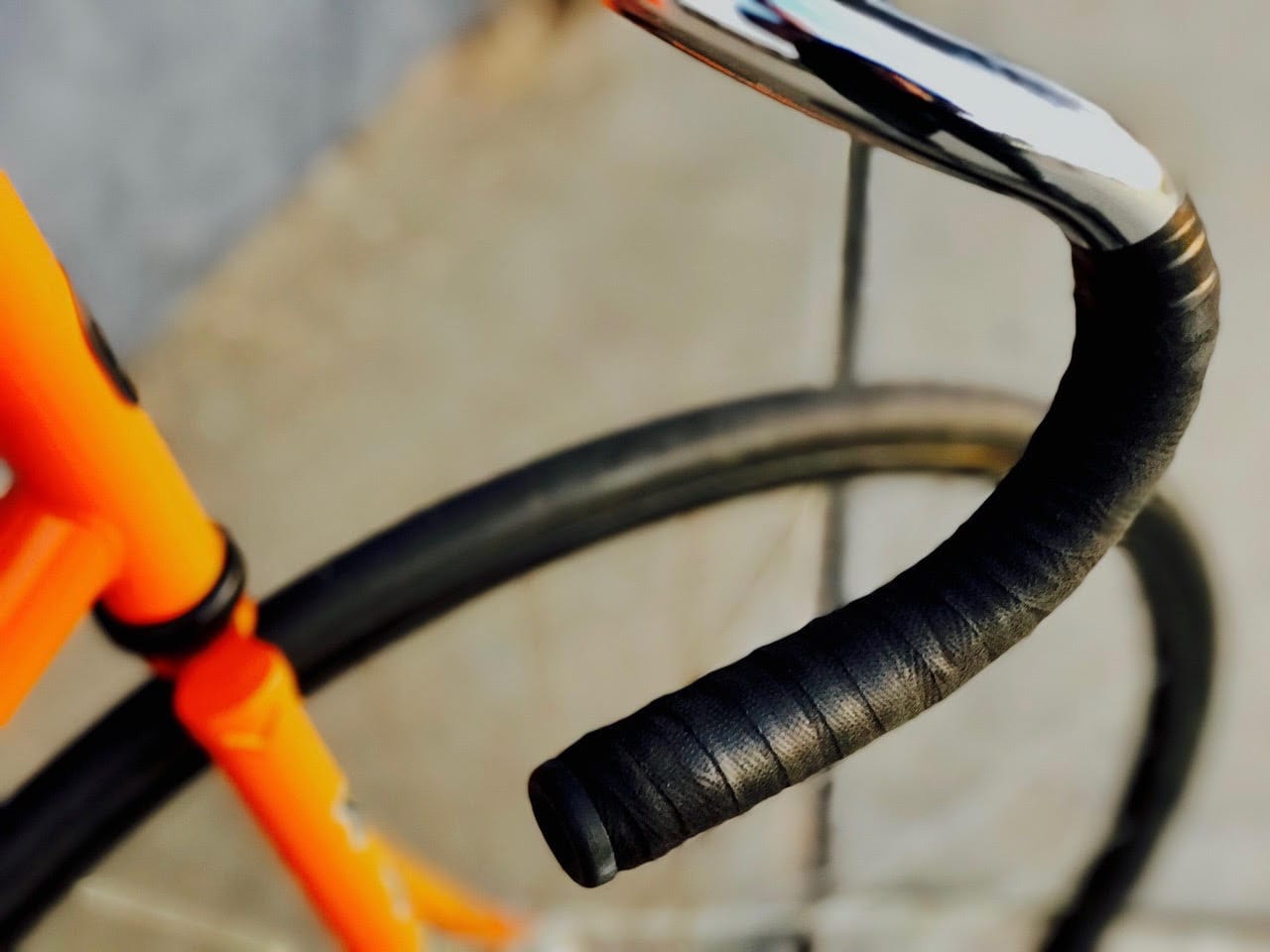
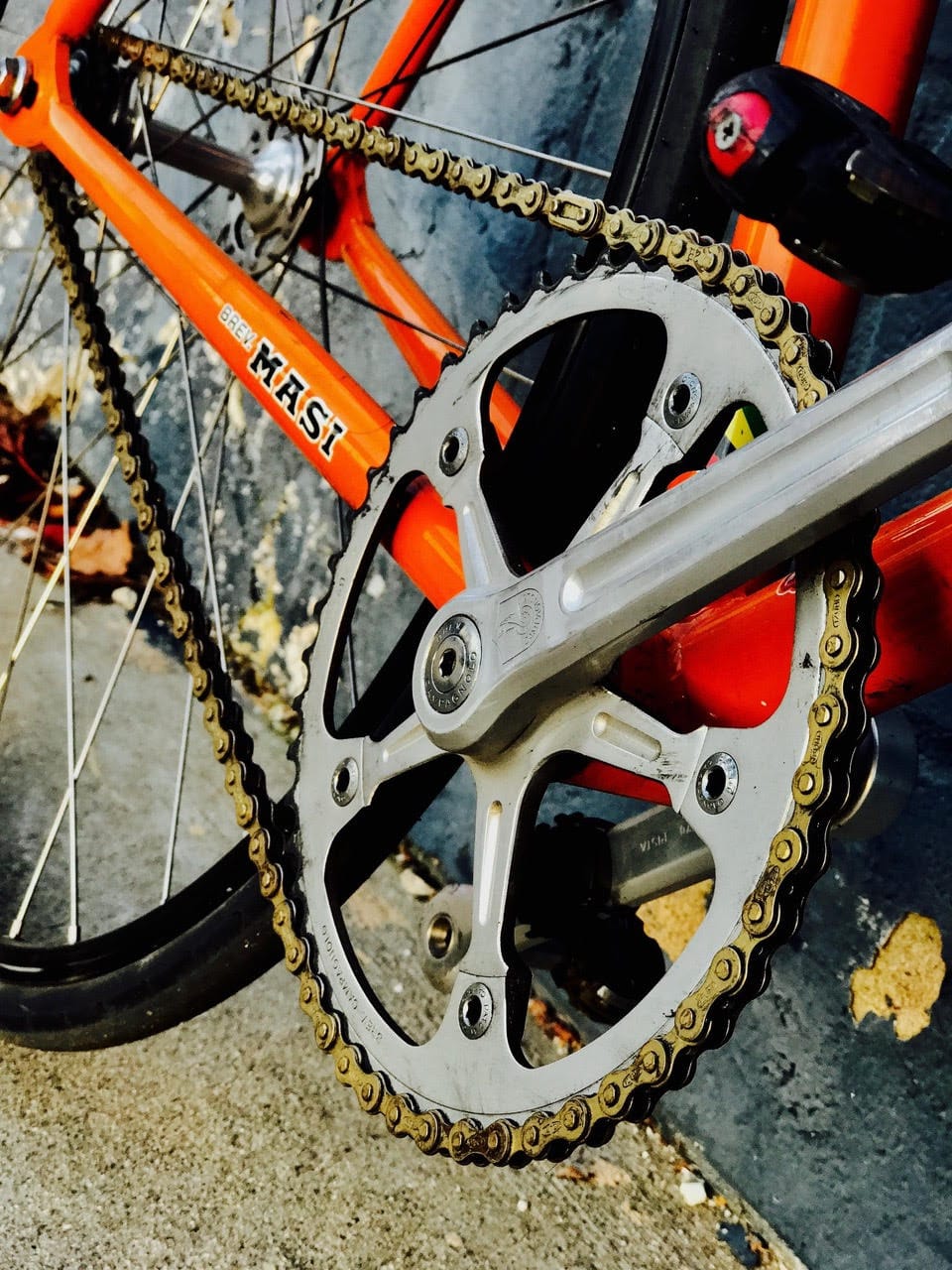
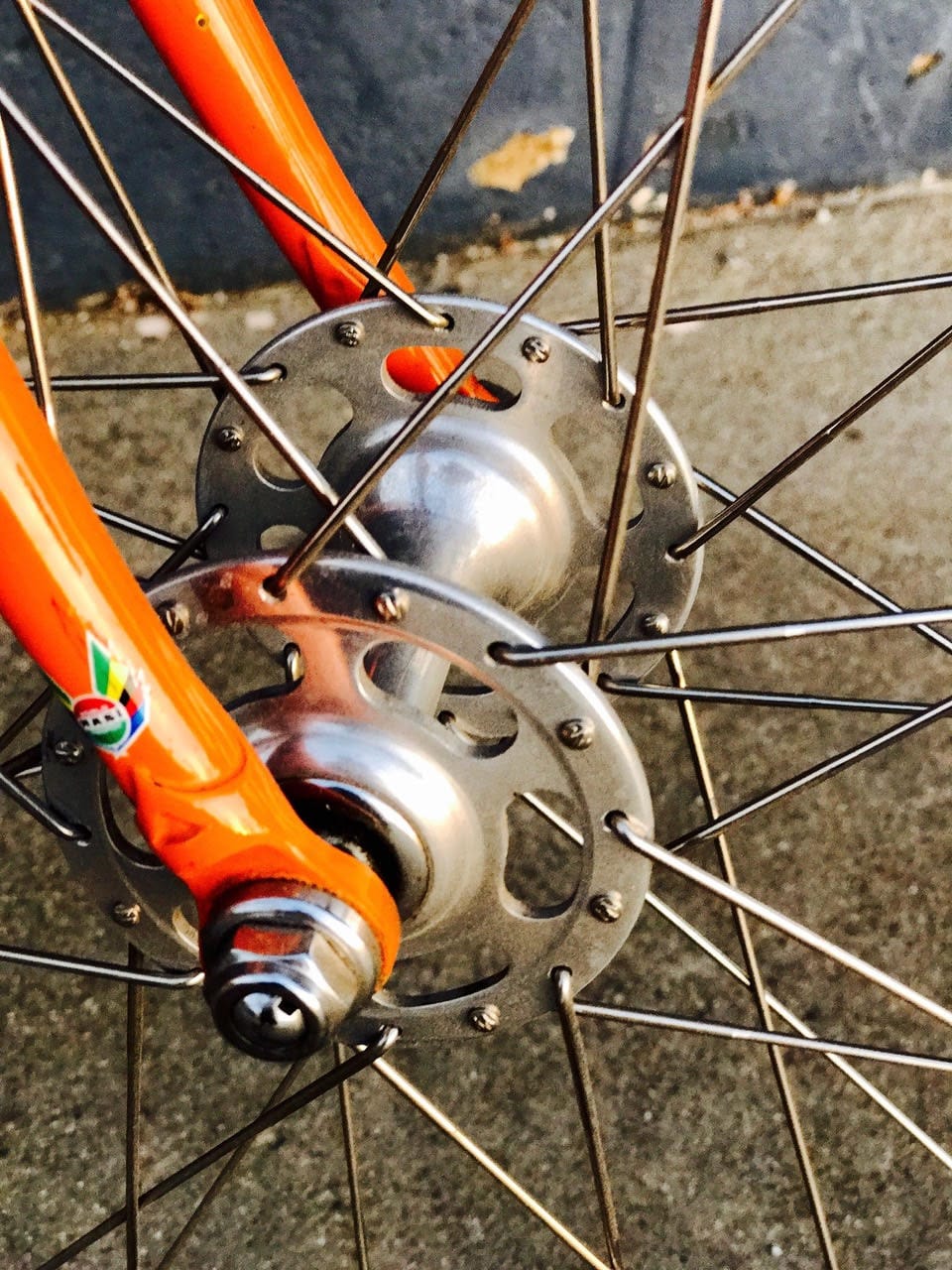
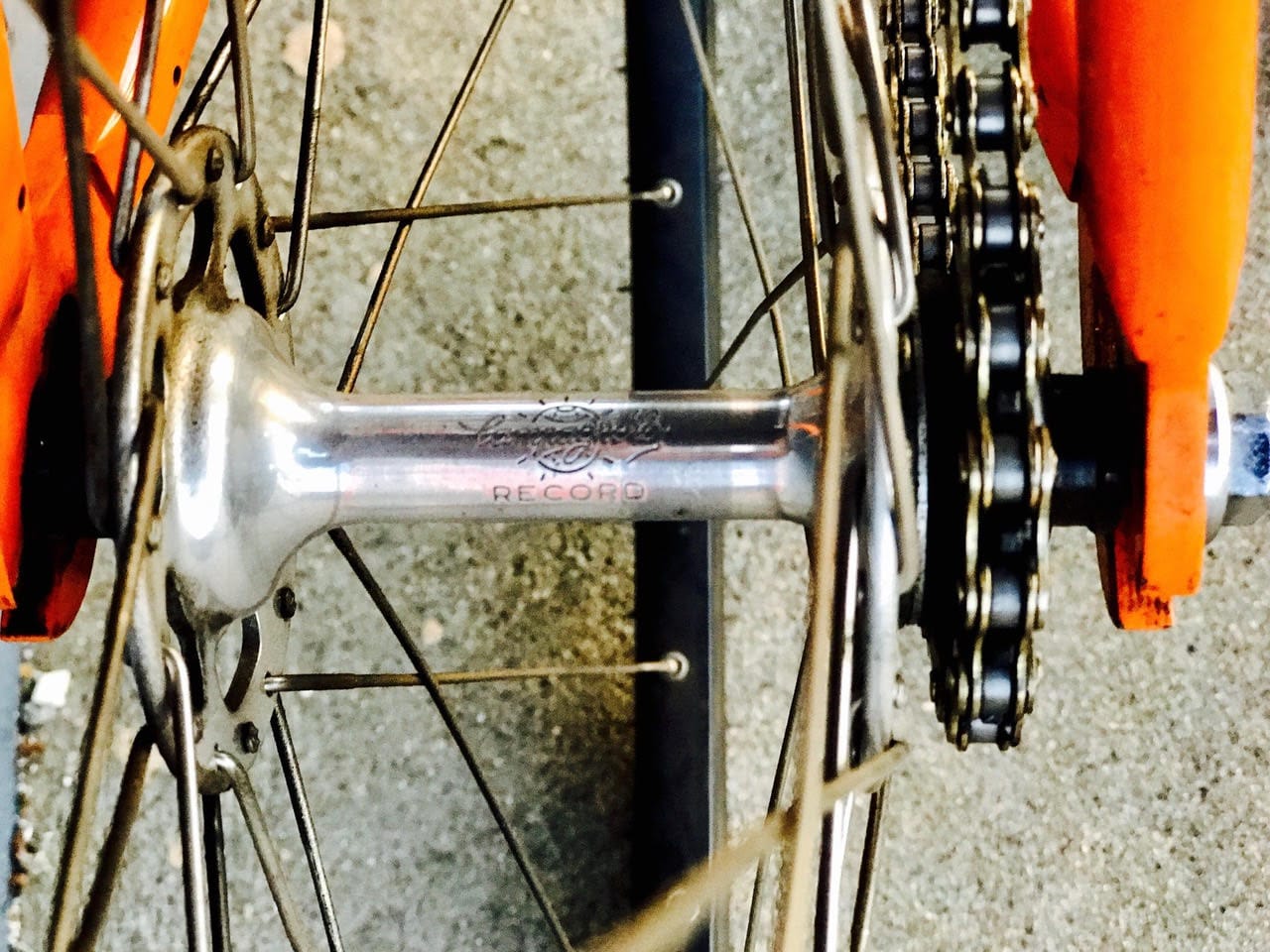
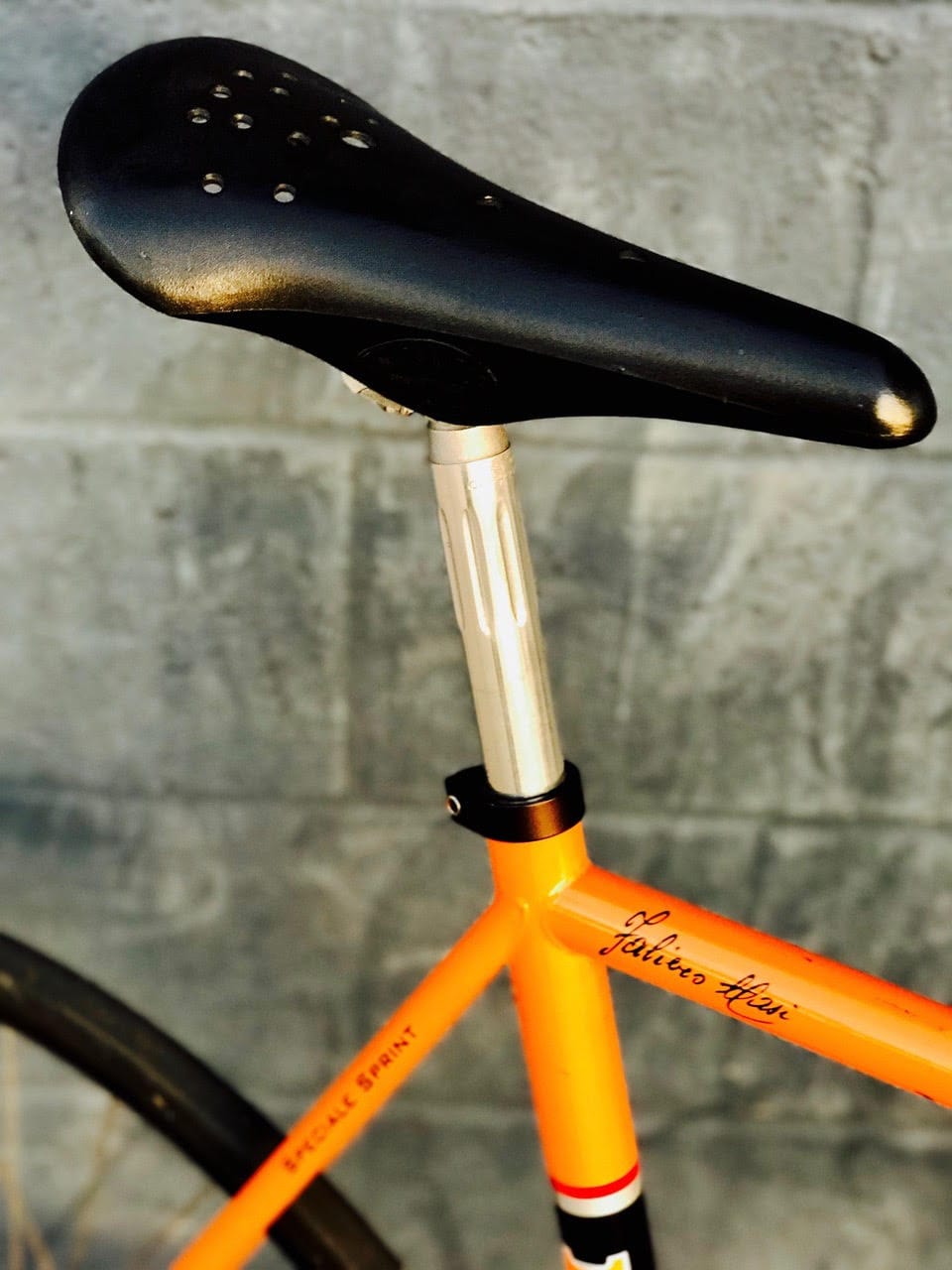

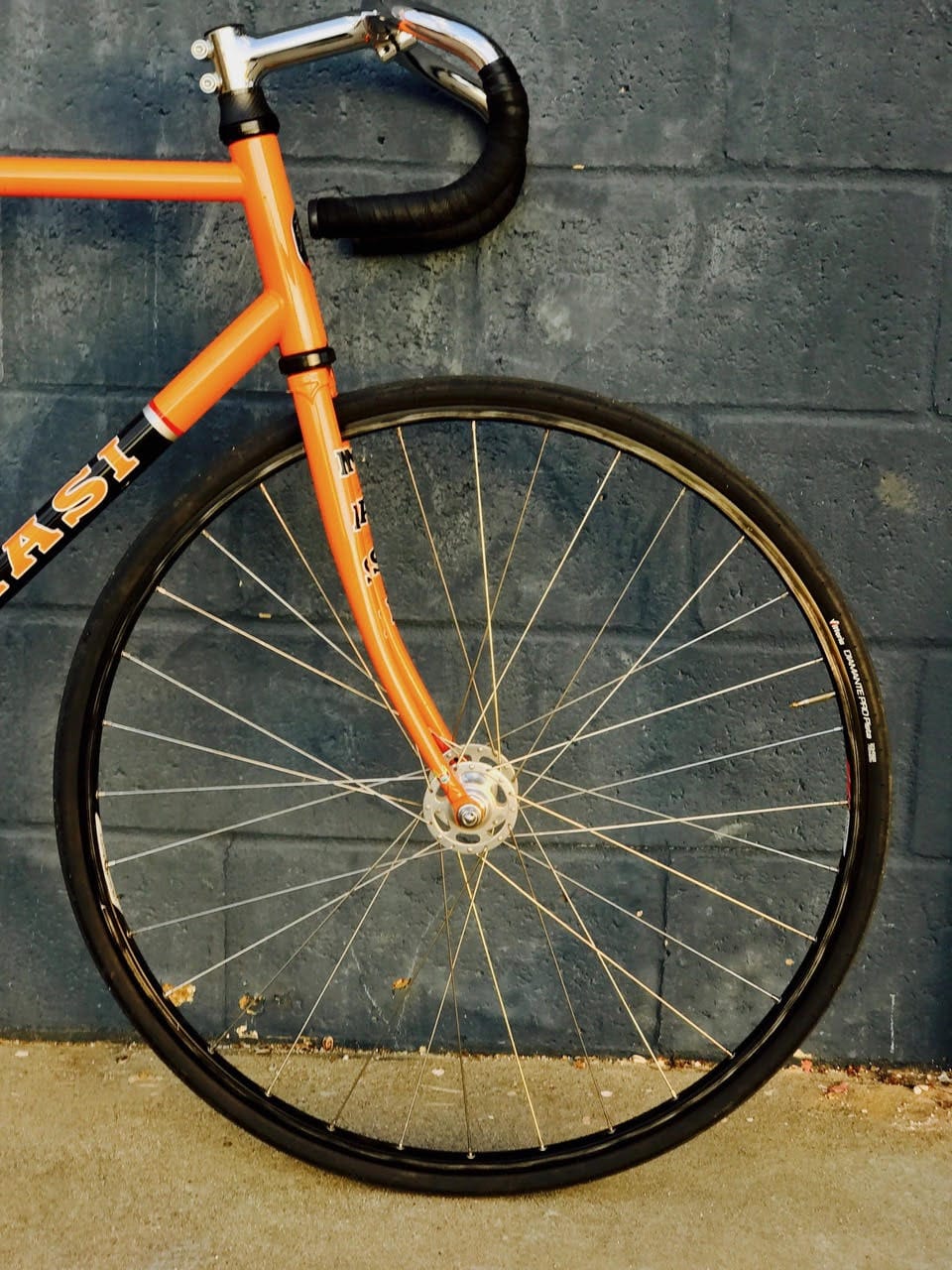
Last, but not least, is my ’85 Guerciotti lugged-steel road bike, with mostly Campy C Record components. 8-speed setup with Campy aero Ypsilon wheels. Heavy as hell, but SO smooth (in part likely due to the 25c Gran Bois tires). That one mostly sits on the trainer in the garage. It gets plenty of use there, plus the occasional ride outside. Despite its heft, I’ve broken plenty of PRs on it. So there’s something to be said for the FEEL of a bike, versus just its weight.
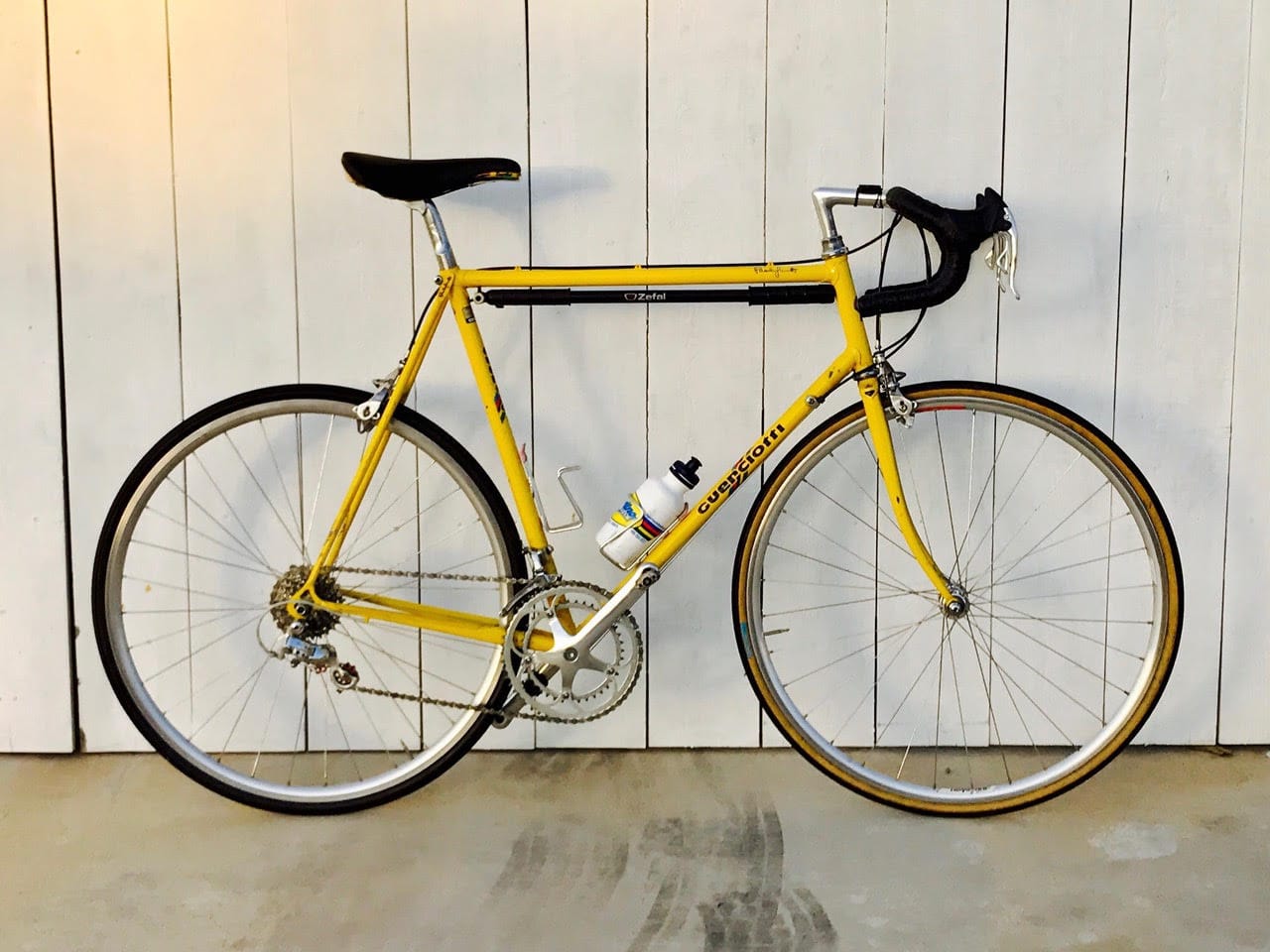
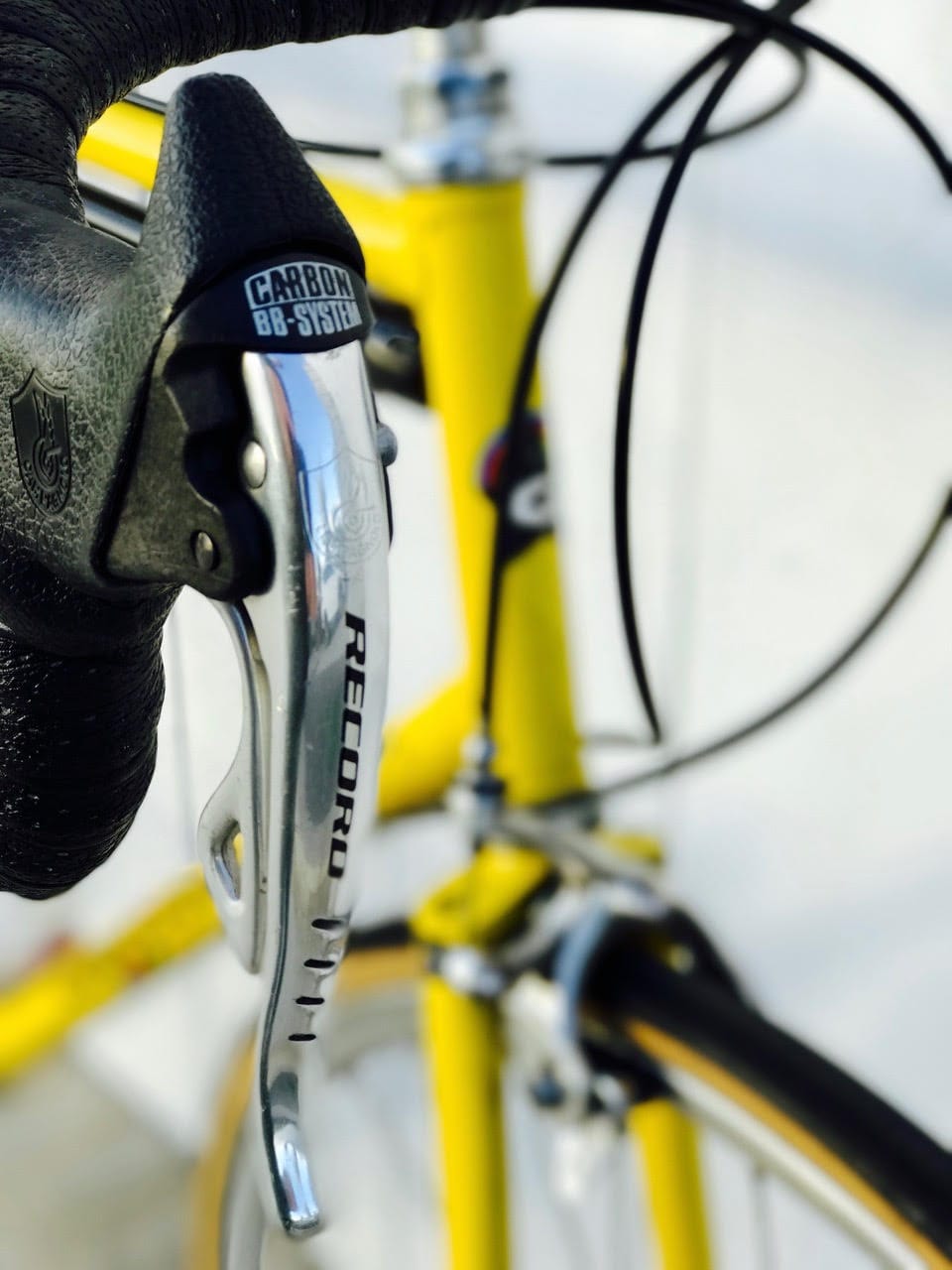
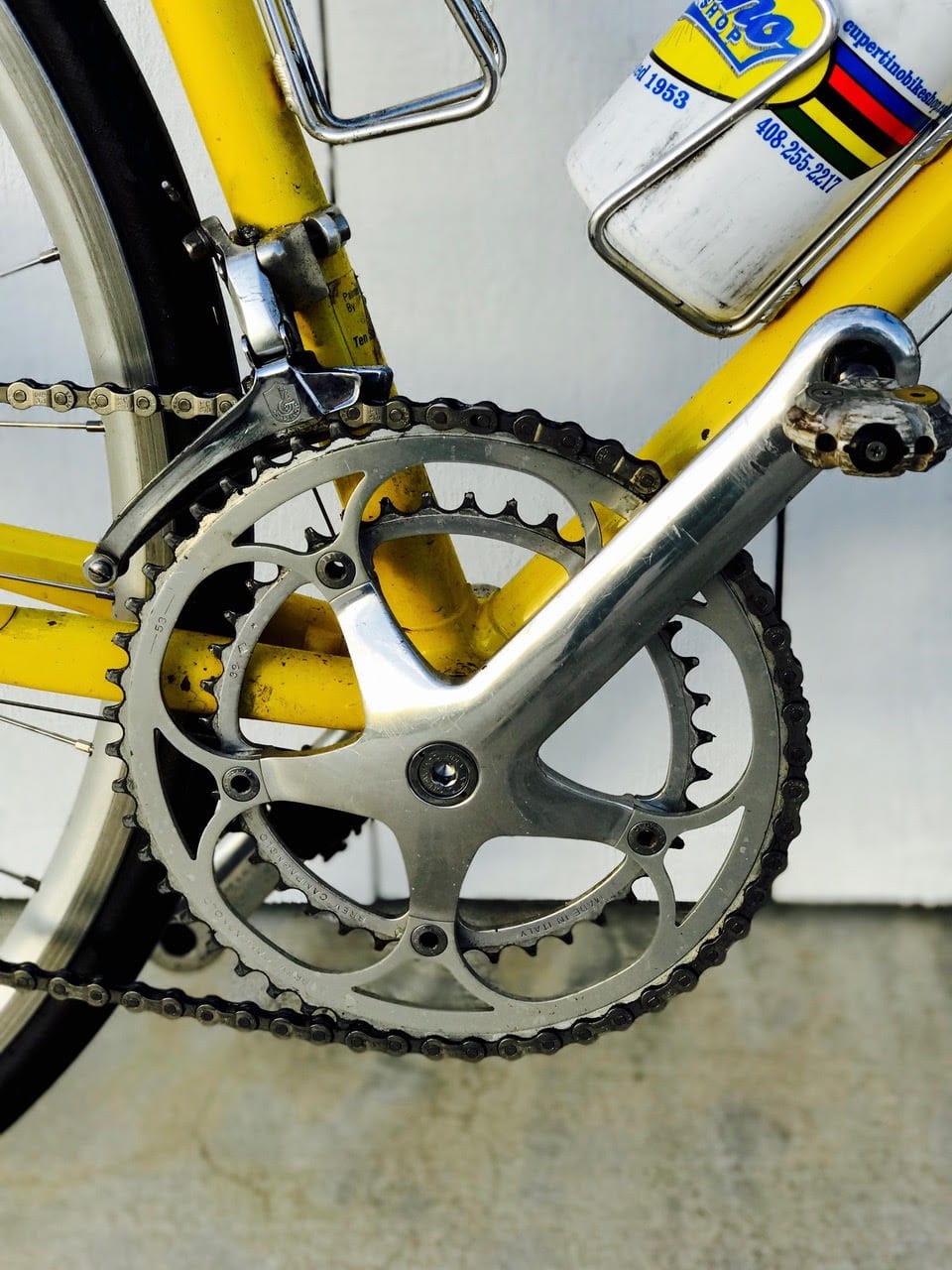
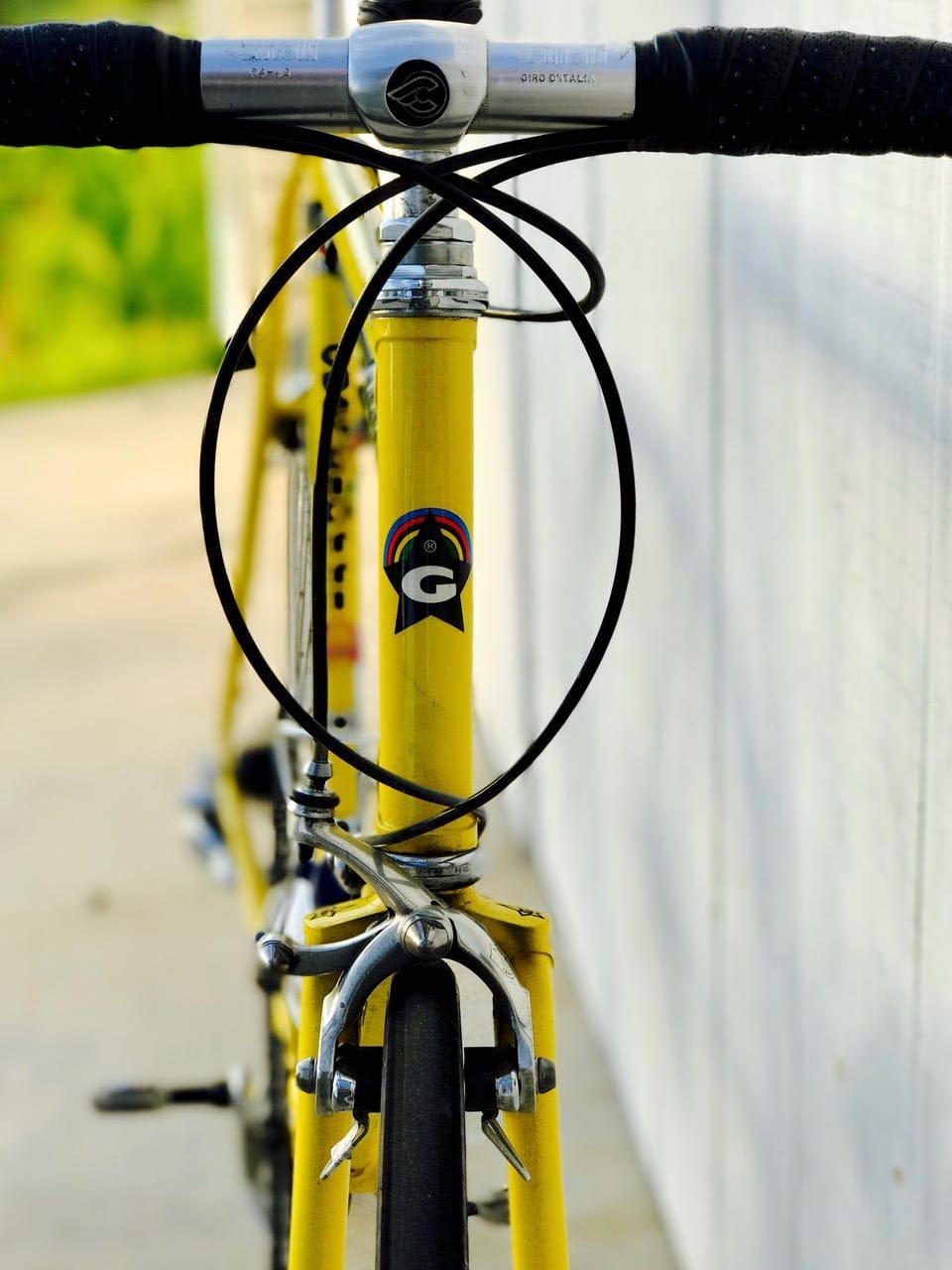
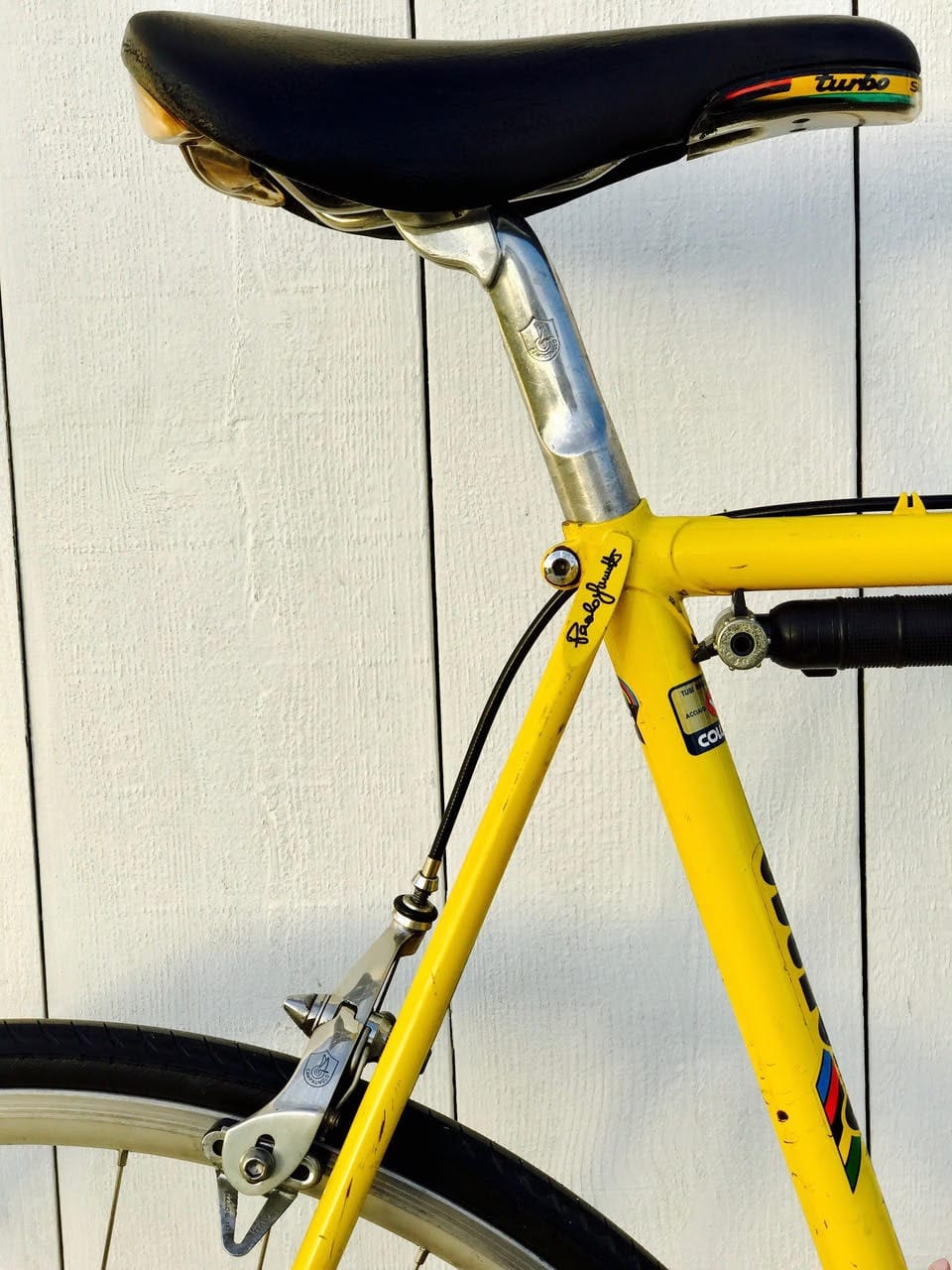
I’m capping my bike quiver at four. One goes out before a new one comes in. Just to keep from going apeshit with every cool bike I see, but can’t afford.
I’m deliberately avoiding mountain biking because that’s another expensive bike and a lot time I don’t have, even though it looks super fun. For now, CX, the road, and track are plenty for me.
At what point did you realize you could make a career out of skateboarding?
I started shooting photos for TransWorld SKATEboarding in high school in the mid 80s, and began working in the office as an editor while in college. That’s when I figured I could continue doing that after graduation. So, I got my degree in writing to complement my photography, and planned to work full time for the mag after college. Eventually, that happened, but not before a major recession and a sabbatical in Russia! But that’s another story, altogether.
You think you could have had a career in cycling?
Oh, hell no! I’ve only been at this for about six years. There are people who’ve spent their lives in cycling, struggling to make a career in it.
I’ve watched the bike industry for a few years. It looks like a tough business. Tight margins, products that (should) last a long time (if taken care of), and ruthless competition. It’s a lot like the skate industry, but at least with skateboarding, the products (boards, wheels, shoes) are much more disposable.
I think bike companies are just starting to really discover culture marketing. For a long time they pushed the jocky performance aspect of their products, with dopey poster boys like Cipollini doing anything but attracting potential fans like me.
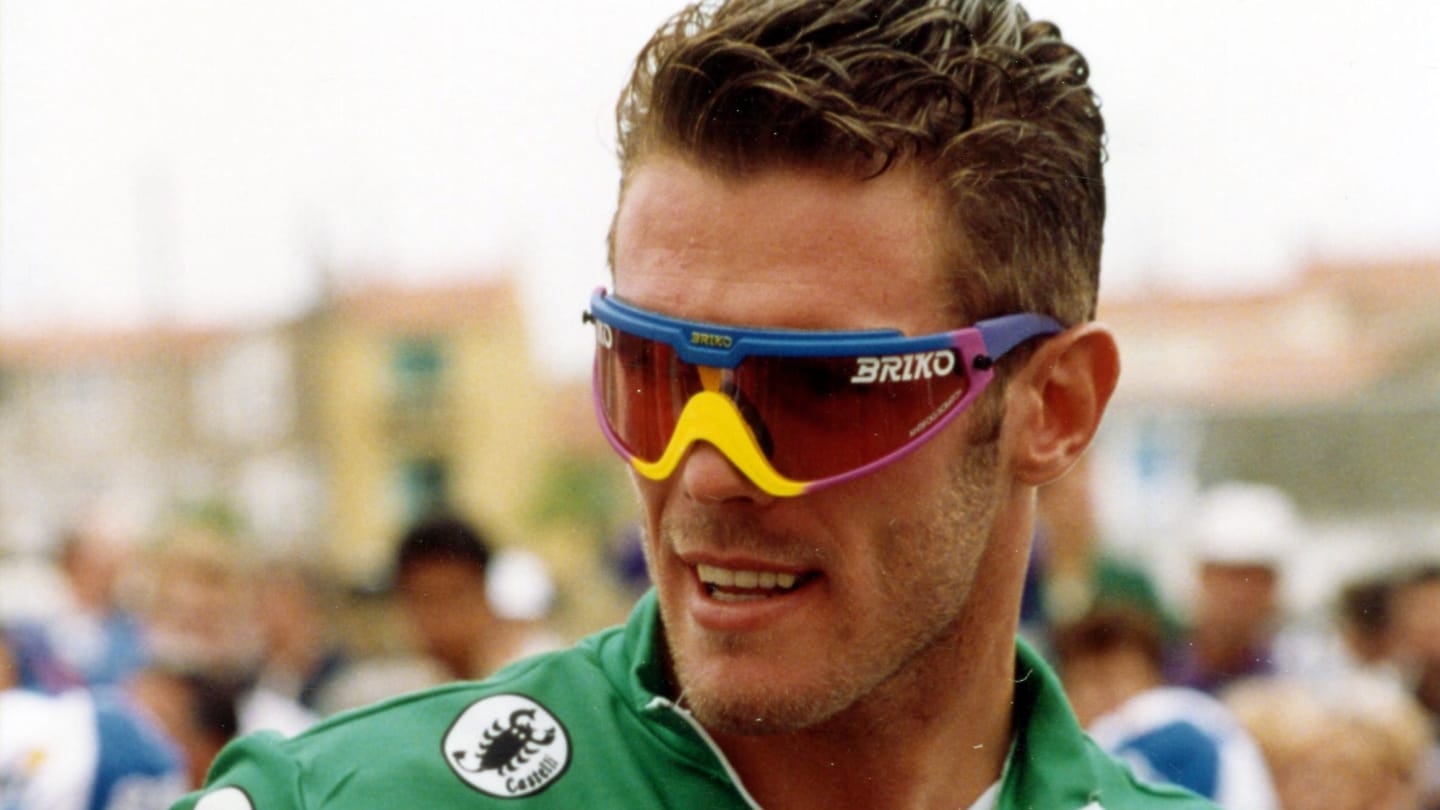 Mooie Mario 📷 unknown
Mooie Mario 📷 unknown
The products all pretty much became the same, at least in terms of quality. The successful brands seem to be building a following based on style or exclusivity. Bike shops are feeling the squeeze of online retailers and now bike companies selling direct-to-consumer.
Skateboarding’s been in that stage for twenty plus years. So, that’s interesting to watch. But I couldn’t imagine being in the middle of it. Plus, while I love cycling — I’m a skater, and skateboarding is where I belong.
Every day I go to work and try to help more communities build public skateparks through a process that we’ve refined over the past decade at the Tony Hawk Foundation. We help them create parks that will last and avoid the problems that closed all the parks of the ’70s, like Winchester. (Kona Skatepark in Jacksonville, FL is the only remaining 1970s-era park.)
You rocking full superhero spandex gear yet?
Yup. Function before fashion. But black shorts only.
Shave the legs?
Nope.
How’s your #sockgame?
Pretty tight. I used to wear whatever. But the gym-sock heel-slip thing is a bummer. I’ve graduated to bourgeoise Rapha socks, thin and light. And black.
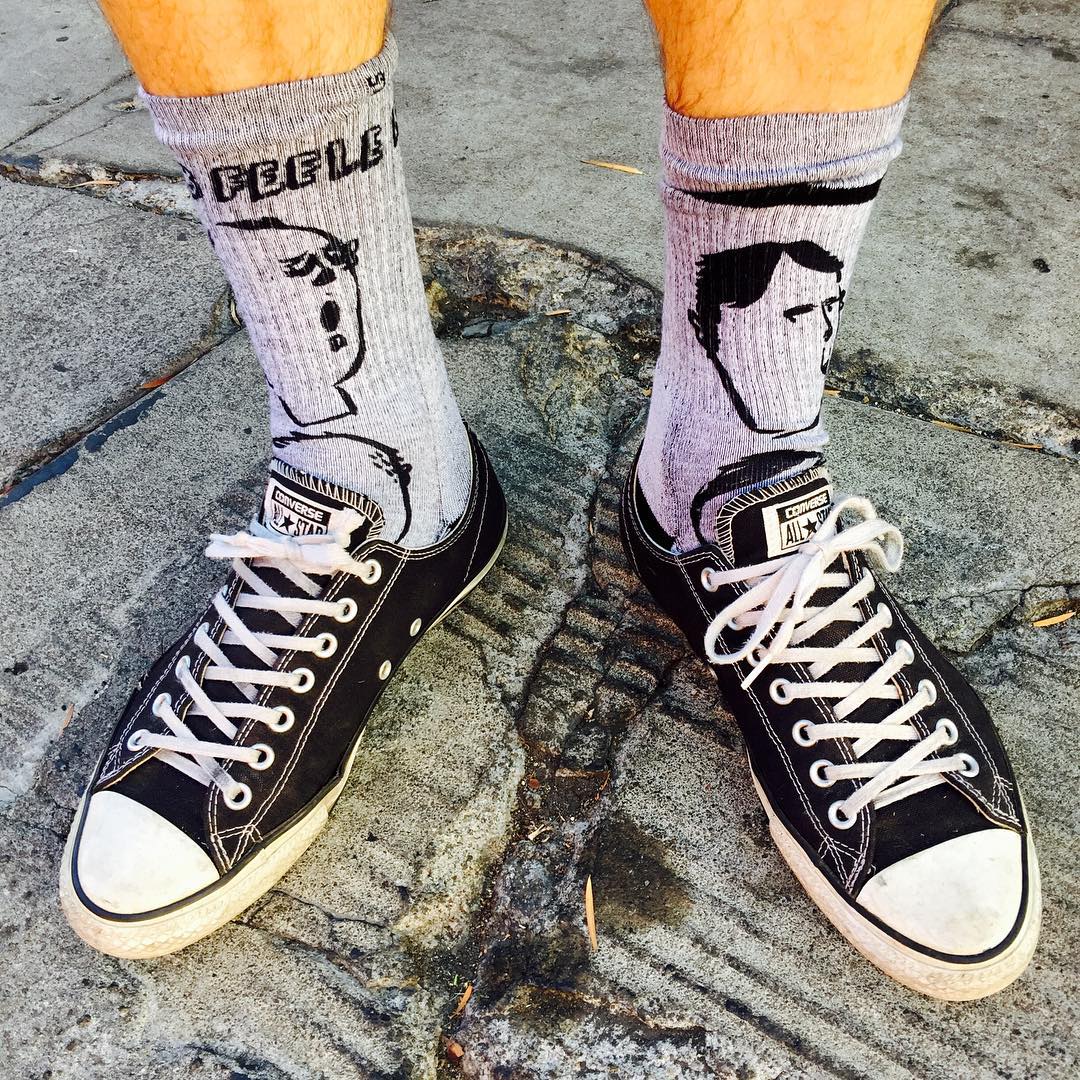 Miki rocking a pair of Stance X Russ Pope Socks
Miki rocking a pair of Stance X Russ Pope Socks
What’s the longest distance you’ve ever ridden?
This summer I repeated the Belgian Waffle Ride course, solo. That was 148 miles (the 146-mile BWR course plus a couple miles-worth of getting lost along the way).
Got to Ramona and missed the turn to Sullivan Dam. Cut 20 miles off my day. Oh well.
It takes a lot longer to ride that course alone, without the fancy police escort to stop traffic, or the well-stocked rest stops every 25 miles to refuel. Plus the mid-summer heat. I should’ve considered all that. But made it anyway. Getting through Canyon Del Oro in the pitch black was no picnic, though.
Have you ever bonked?
Yup. Early in this cycling experiment, probably 2012, I got so engrossed in the mileage I was achieving that I forgot to eat. I was probably 20 miles from home at the time. Got some food in me, crawled my way back. Never did that again. I probably overeat these days. But I haven’t bonked since then.
What’s the furthest you ever skated?
Rode to my aunt’s house once when I was 13. About 5 miles.
Are you on Strava?
Yes, Strava was an early motivator because I tend to ride the same set of routes, and by targeting my PRs, I get to effectively race myself. Or I should say, my old self. I only repeat a route maybe every month or two, so in that time I expect to improve a little.
Got any KOMs?
I don’t have any KOMs — San Diego has too much talent for me to threaten any records (though I was once #8 on the Milton Street climb). But Strava lets me target my own PRs. That’s my only ambition, to improve and show something for the effort. Ultimately it’s about enjoying riding and improving health. Becoming a better cyclist allows me to enjoy it more. Same as skating.
You think Strava should add skateboarding as an activity on their site?
Yes, I’ve contacted them about it. So many people are skating as transportation. In an age when pedometers allow people to claim exercise for doing what they do anyway (walking around), it would make sense to be able to track skating just as people track their bike rides or commutes.
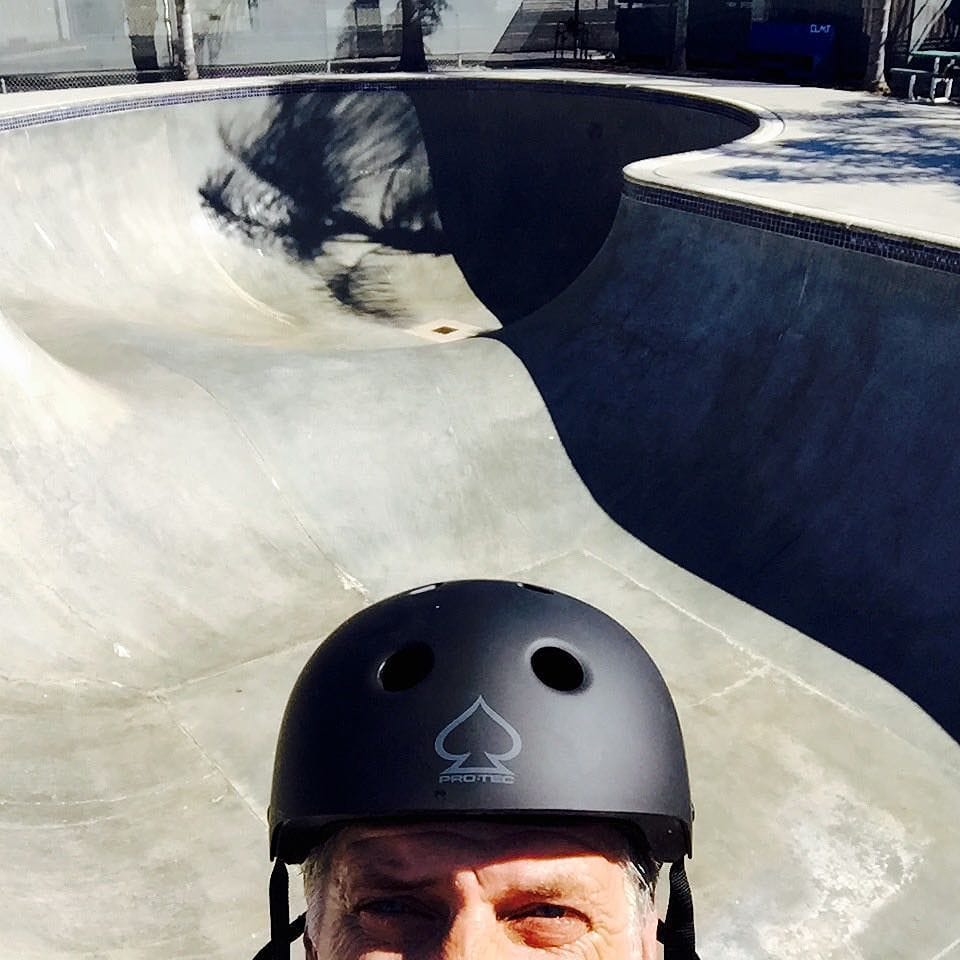 Clairemont Skatepark
Clairemont Skatepark
If they can map skateparks, too, with all the features and bowl depths, they could estimate effort, watts, and calories burned, too. With 5.6-million skateboarders in the US alone, that could be a huge new market for them.
Which skater would have the most downhill KOMs?
Favorite skate spot?
All time would be the Bricks in San Jose. It’s a set of brick banks around a downtown parking garage. About four-feet tall, tranny at the bottom, sharp edge at the top.
Also love Derby in Santa Cruz, but that’s a skatepark, not a spot. Feels like a skate spot when I ride there, though. Even after 35 years. I’ve lived in San Diego most of my life, now, but for whatever reason, those NorCal spots stand out.
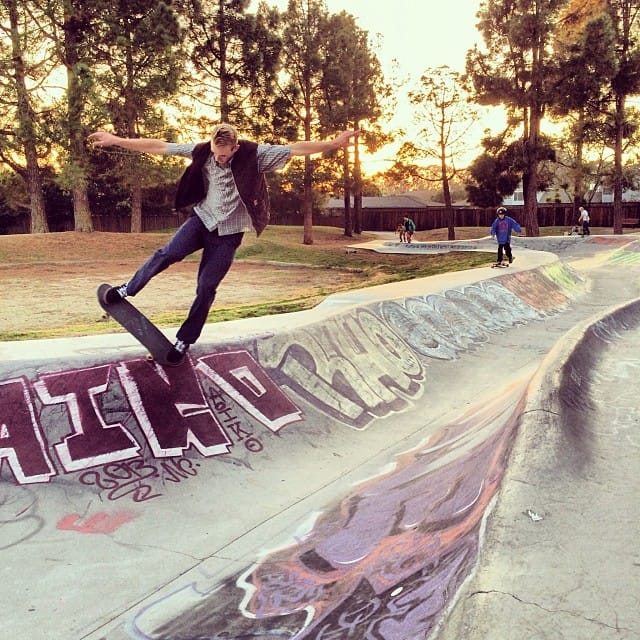 Derby Skatepark
Derby Skatepark
Favorite bike route?
I roll out from my house in Clairemont (San Diego) and head north through Del Mar, Fairbanks Ranch, the rolling hills of Rancho Santa Fe, by Lake Hodges, Elfin Forest, maybe hit Double Peak if I’m feeling bold, then down PCH and up the Torrey Pines climb on the way home. Lots of trails and dirt sections optional along that route, too. About a 70-mile day.
How’s your skateboard palmarès?
Pfffft! What? I rode CASL in 1983. Got 2nd place three times: Upland pipe and bowl, Oceanside freestyle, and Del Mar halfpipe. That’s the extent of my competitive skate career.
Gullwing team manager Jim Goodrich gave me a pair of trucks after the Upland contest. I also got a photo from that contest in TWS issue 2. But getting trucks from Jim was fantastic. I’ve gotten lots of free equipment over the years, but that was the first time I got something I felt I earned. Even though I know he was just being cool.
Getting a board from Lance Mountain a couple weeks ago was a pretty close second. Didn’t expect that, at 48, and from a guy I’ve known and admired for decades. But his pulling a board out of his car and handing it to me caught me off guard — I choked up. It’s been a blast riding that thing. And it happens to be orange, like my Stigmata!
 Gift from Lance
Gift from Lance
Bike racing has made me wonder if some sort of old-man am series might be fun. The Masters pro events are amazing. But that’s retired pros. The rest of us might enjoy “competing” too. And I mean that in the loosest sense of the word.
I just wonder if skating in a contest these days would put a little more fire under my ass to learn (or re-learn) tricks and lines the way bike racing motivates me to train and improve. We shouldn’t need that, but the prospect of competing or racing does something in your head. Gets you off your ass and in the bowl, or in the garage on the trainer.
Have you done any bike racing?
I rode for a couple years with no ambition to race. Then in 2012 I saw a cyclocross video on YouTube and couldn’t believe what I saw. It was clear that I HAD to do that. Have no idea where the motivation was coming from.
Cyclocross (CX) is a discipline that’s strictly racing. You don’t casually go for a cyclocross on the weekend. There’s a course and you ride it with other people, and going around them and past them is part of the experience. So, jumping into CX meant I would be racing bikes.
My first CX race was in San Diego later that year. Part of the course went into the velodrome (and up the banks), and that actually introduced me to the fact that we had a local velodrome. I rented a CX bike from the race organizer and rode platform pedals in my sneakers.
Before the race I thought I was in decent shape, having put some road miles in. But that’s when the concept of “empty miles” really hit home, because after the race I was absolutely decimated. But I was hooked. And motivated. And my toes had completely blew through the front of my sneakers.
 The result of Miki’s first cross race
The result of Miki’s first cross race
No more cruising the coast route on a leisurely Saturday morning. No more baggy wind-grabbing MTB shorts over my Lycra. Time to step up. Soon after that, my next bike was a CX bike.
Lee Crane was really interested in my experience when he heard I’d raced CX. He invited me to write a piece about it for Bikeistan.
In 2014 I rode the State CX Championships in Bakersfield. You don’t have to qualify for that, you can just enter. I was still Cat 5 then (beginner). It was a small field of 15 riders. I was in the front group of five the first few laps, them dropped my chain. Everyone passed me. Clawed my way back to finish 10th.
Soon after that I got my Cat 4 license in CX, road, and track. Last couple seasons I’ve been finishing mid pack in CX. Road racing is another animal altogether. If I can finish in the group there, I’m happy.
Some guys are born with a Ferrari engine under the hood. I’m, quite literally, a Yugo. So, I have modest ambitions as a racing cyclist. Very modest.
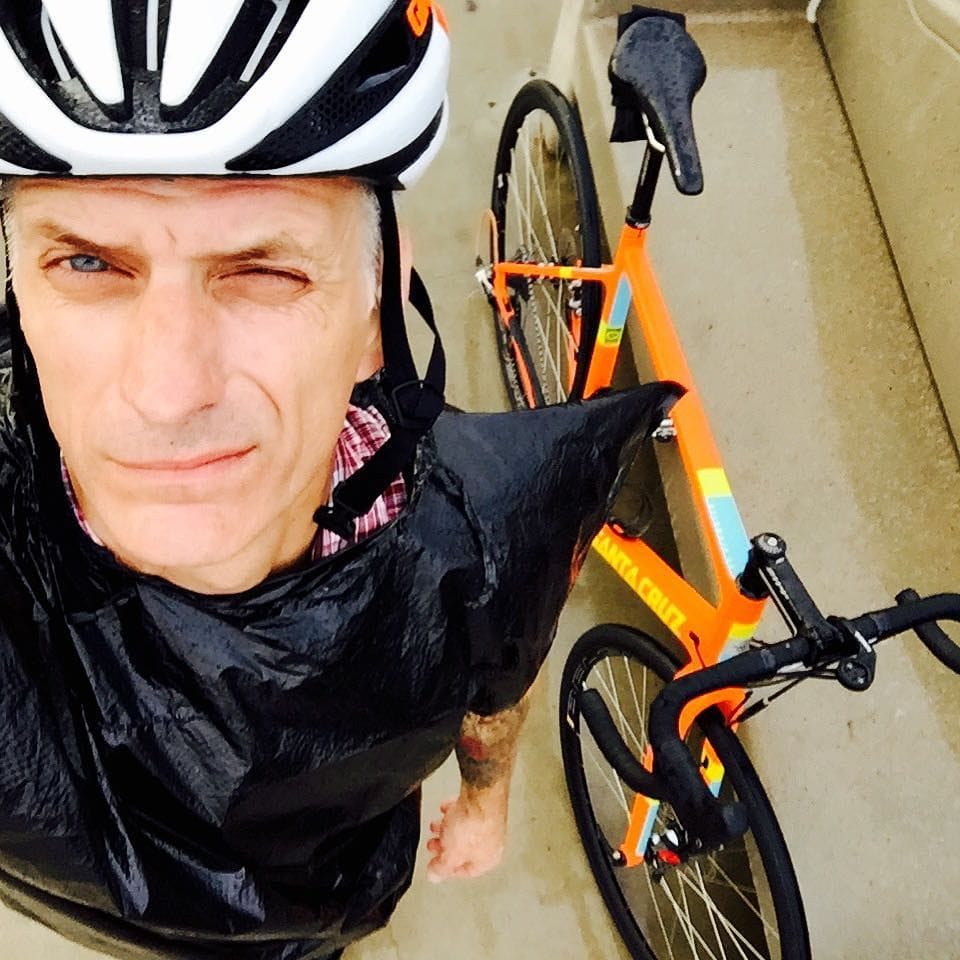 Rain or shine, the cross always goes on!
Rain or shine, the cross always goes on!
A few years ago I started training with a group at the San Diego Velodrome once a week. Talk about a rush! There are only about 30 velodromes in the U.S. So, like skateparks once upon a time, they’re a rare commodity and anyone lucky enough to live near one should give it a try.
Anyway, I’ve been finally finding some form there and winning some races now and again. Def. not in the A group, though.
I race with the San Diego Bicycle Club (SDBC), though they don’t have a CX program. But they appreciate that I’m representing the club, even as a lone wolf out there in the mud. Wait, did I say mud? CX usually involves slippery muddy courses, but in SoCal, we never get mud. More dust than anything.
In cycling a team works together to get one of their guys on the top step of the podium. You think that could ever happen in skateboarding?
No. the word “team” is an oxymoron in skateboarding. The only sense in which there’s help from teammates in skateboarding is the cheering and motivation a skater gets from his or her peers before a run (emotional drafting).
But that comes from those they’re skating AGAINST as readily as it does from their own teammates. In contrast, Froome will get no love from Nibali. Not ever.
Skateboarding is coming to the Olympics in 2020, how will WADA handle that?
The skaters will give blood samples and pee in a bottle, and WADA will test them. The whole Olympics experience will be completely new for skaters, so to add one more weird procedure like peeing in a bottle will probably not seem like a big deal.
Skateboarding is a skill-based sport. Cycling is an endurance sport. Doping won’t help you in skateboarding. Steroids or EPO don’t enhance your style. And Skateboarding’s not a marathon.
The only issue skaters will face is the potential that a recreational drug they happen to use is on the banned list.
Only a handful of skaters will be in the Olympics, so how about we make that a handful who happen to not use anything on the WADA banned list? Seems simple — if you want to use drugs, don’t pursue an Olympic team call up.
You think skaters will ever accept out of competition doping tests?
If they want to compete in the Olympics they will. There are plenty of competitions and career trajectories for pro skaters that don’t involve the Olympics. It’s going to entail a number of conditions unique to it. Either you’re down for it or you’re not.
It would be foolish to pursue an Olympic team spot and attempt to use anything on the banned list, out-of-competition testing or not. I just don’t see a need for it to be controversial. Go all in, or ignore it.
The Olympics won’t change skateboarding. It’ll give a handful of men and women an additional career goal. For the rest of the skateboarding world — as you were.
Favorite skate contest?
Probably the Munster Monster Mastership in Germany in the late 80s/early 90s. Skateboarding was dead (again) in the U.S., but no one told the Euro kids. They’d swarm that town every year to see all the top European skaters take on the Americans, Canadians, and Brazilians. It was the only true World Championships. And they had vert, street, freestyle, and slalom. The sound of packs of skaters rolling across the cobblestone streets would echo through town all night, the local parks were full of tents, with kids from all over Europe and Scandinavia camping out. It was amazing.
Favorite bike race?
For sure, Paris-Roubaix. The real test of a rider is going balls-out in a one-day race. Add the treacherous Roman-era cobble sectors and narrow turns, and you have real carnage. Stay at the front, or get ready to hit the deck. There’s no point hanging on the back at Paris-Roubaix. A flat tire and you’re out of the race, so choose your equipment wisely. And the most ironic thing — after 250 kilometers of bumpy cobbles, dust, and maybe rain and mud, the race ends in a velodrome sprint! It’s rather Homeric in that way. The most fantastic cycling film is Jorgen Leth’s A Sunday In Hell, about the 1976 Paris-Roubaix race and featuring Eddy Merckx and cycling’s “The Dude,” Roger DeVlaeminck. Watch it and you’ll know what I mean.
Who’s your favorite skater?
I’m from San Jose, so I grew up loving Cab’s style. I was also a card-carrying member of the Bones Brigade fan club in the early 80s. So, that’s where my roots are.
I met Tony Hawk when we were 14. I identified with him because he was my age and we became friends. I have so much respect for him as a skater and a person, it’s hard to distinguish between my appreciation of his skating or what he’s done in his life with his skating — the opportunities he’s created for all of us in skateboarding.
But Tony was an early favorite. And the shit he’s been doing the last couple years is astonishing. Just as a skater, not to mention as a 48-year-old skater.
I have too many other favorites over the years to even list. Each brought something innovative or stylistically critical to skateboarding. It is what it is because the pros over the years have inspired us rank-and-file skaters to create our own reality in the culture and maybe contribute something back, as they did.
And your favorite cyclist?
I would like to say Mr. Paris-Roubaix, Roger DeVlaeminck. For the sideburns, if nothing else. And partly because he was a top road racer who was also a cyclocross champion.
But I can’t, because by far the greatest cyclist of all time is Gino Bartali. Yes, he won a shitload of races, including the Giro and a couple Tours. And his feat of winning the Tour de France ten years apart (1938 and 1948) has never been duplicated. What classic rider still has a record standing? Maybe Merckx for number of TdF stage wins.
But Bartali is the greatest cyclist, not for what he accomplished ON the bike, but for what he used his cycling success to accomplish. During World War II, when the Nazis occupied northern Italy, Bartali worked for the resistance, hiding forged ID papers in his seat tube and riding hundreds of kilometers, through German checkpoints, to deliver the papers to Jewish refugees in hiding.
He must have saved hundreds of lives by using his celebrity to be waved through the checkpoints and carry those documents. If he were stopped and the documents found, he’d have been shot on the spot. He did this over and over until the end of the war. And afterward, he never talked about it. A friend found out and later wrote about it. Check out the book, Road To Valor, or the Netflix documentary, My Italian Secret.
After WWII Bartali went on to win his second TdF. Coppi was still a kid through all this.
Favorite skate team?
Bones Brigade. That was my time. Cab was my hometown hero.
Favorite bike team?
Dimension Data For Qhubeka for obvious reasons. The way MTN Qhubeka (their previous name) broke info the Tour was amazing. Instant impact.
I guess I look for the meaning beyond the bike. Anyone can buy a fast racing team (Sky). But what’s the impact after the finish line is crossed? Is it just entertainment, or is there more to it? I like to think the latter.
Favorite skate photographer.
JGB.
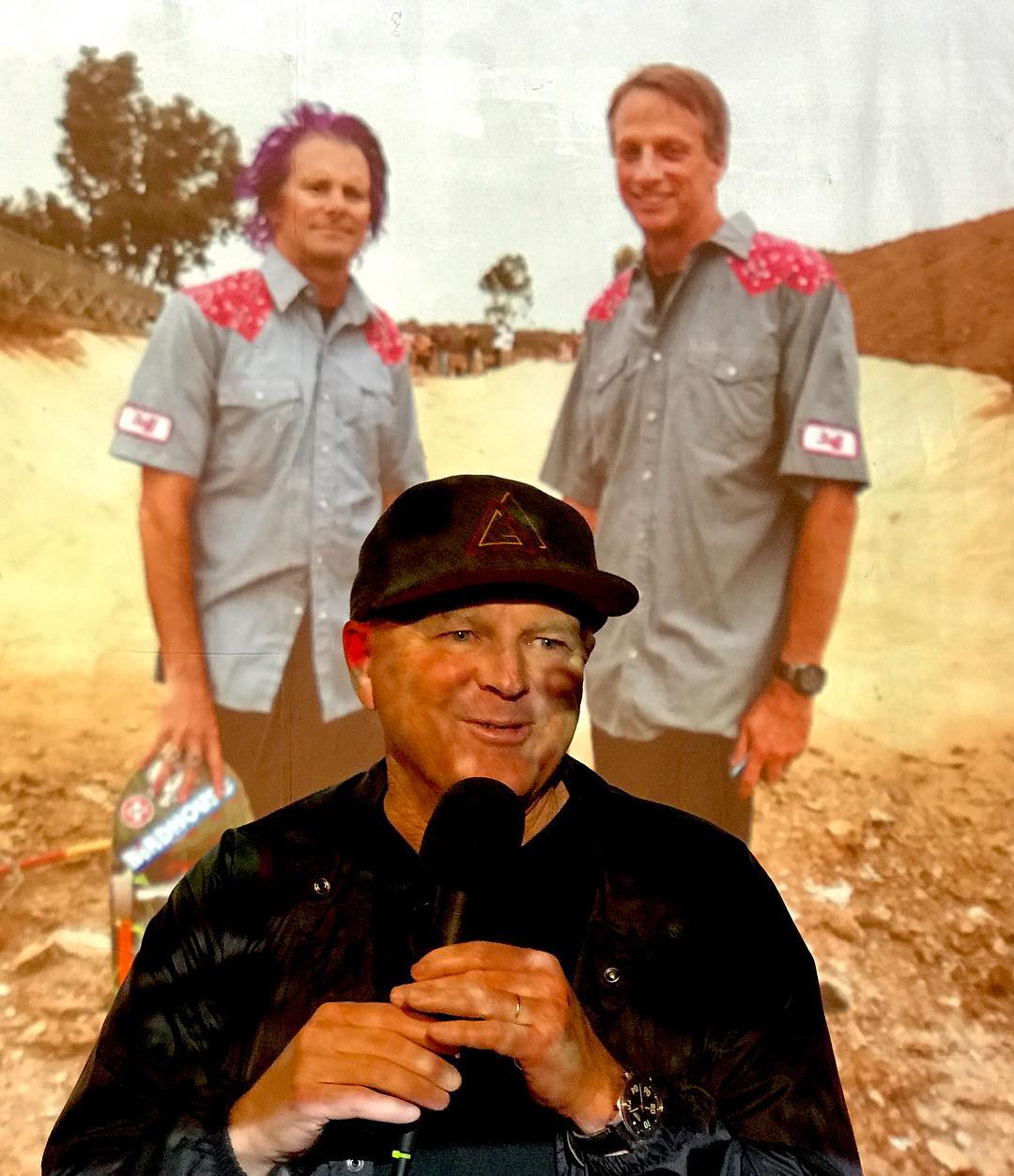 Grant Brittain welcomes guests to his Archive show
Grant Brittain welcomes guests to his Archive show
Favorite bike photographer.
Andy Bokanev or Jakob Kristian Sørensen.
You think cycling beneficial for skating?
In 2011 I was in Austin for a nonprofit conference. Ironically, it was hosted by LiveStrong. I spent a couple hours at House Skatepark, the local public park, and was skating back to my hotel when I passed by Mellow Johnny’s.
The shop was buzzing with old men in Lycra. It was a little disconcerting at the time. But I popped in to see what the hype was about. I was also interested because it was Lance’s shop, of course, and he’d been a gracious host, so far. As I stood there I felt the standard throbbing in my knees that was normal after a session.
In front of me was a row of $800 Trek townies, and the idea struck me that maybe some time on a bike — you know, just putzing around the neighborhood — would be helpful. And $800 seemed exorbitant.
Instead I went on eBay and found a random “ten-speed” frame set with a funky green patina. No one else bid on it, so I picked up the Jeunet for $70. Then, piece-by-piece, I spent much more than $800. But I’d built my first bike in over 30 years. And that feeling is worth something.
Fast forward, and yeah, the knees are good! And the legs can carve faster, push a little harder when I need them to, ride longer than I used to. And maybe my balance is slightly enhanced.
So, yes, cycling is beneficial to skating. To my skating, at least.
What about skating, you think that’s beneficial for cycling?
Skateboarding prepares you for so much shit in life, it’s insane that it’s not mandatory for all teenagers to skate. Well, it prepared me, and probably my generation experienced a lot that current skaters don’t. But the adversity of having to push through all the self doubt and land a fucking trick and learn to commit and stay on can apply to any challenge you face.
Gavin O’Brien (Faction singer and former Santa Cruz team manager) has a theory he calls skater’s advantage: Take two people, both with equal talent and credentials, and throw something new at them — nine out of ten times, if one of them is a skater, he or she will adapt way more readily than the non-skater. I’ve seen this manifest many times over.
So, the first time I got on a fixed-gear bike and rolled up the banks at the velodrome, or the first crit race I entered and found myself in a bunch of floundering fellow Cat 5ers bouncing around a tight course, I just read the situation, picked the best wheel, and got on with it.
That was skateboarding reacting to those situations. I probably rely on my skating experiences a hundred times every ride without realizing it.
Which pro skater should ride a bike?
It would be amazing to see what Danny Way could do, either on the road or MTB. I can’t think of anyone who could push through the hurt like he can.
What’s missing in skating that’s “available” in cycling and vice versa?
Skating takes skill and balance. Lose your balance, and your run is over. Cycling is a endurance sport, so it’s more forgiving in that way. You don’t have to really have a base level of competence to do it. Just stay upright and you’re good. You can gain skill on the bike and apply that for success in racing, but it isn’t a prerequisite like it is in skateboarding.
If you’re having a bad day on the bike, you can just spin for an easy ride. Having a bad day on a skateboard means you’re falling a lot. Which hurts. Skateboarding is a bit more selective like that. No easy Saturday group rides in skateboarding.
Which sites, podcasts, etc do you like to check for both skate and cycling news?
- Ride Channel
- The Berrics
- SKATEDAILY.net
- Crailtap
- VeloNews
- In The Crosshairs
- The Cycling Podcast
- Speed Metal Cycling Podcast
- Ask a Cycling Coach Podcast
- Crosshairs Radio Podcast
What do you think of The Rules?
Funny. Generally true, but meant to be broken, creatively.
Are there any in skateboarding?
Black shorts, only.
No, skateboarding has no rules. You make you own. Any kind of self-appointed “Skateinati” would be laughed out of the room. The mags used to kind of serve that role, but at least at TWS, we always looked for cues from the current top pros to suggest what’s new or cool. It was never us insisting who or what was acceptable. I hope that’s how it came across to readers, anyway.
I don’t think there’s anything in skateboarding today like the concentration of influence that the mags once had. Well, Jake Phelps, maybe! ; ) But with all the half-baked Web sites today, there’s no one authority in skateboarding to even threaten to become anything akin to the Velominati.
Skateboarding is much more like Fight Club than the Velominati. And you know what the first rule of Fight Club is…
All photos by Miki Vuckovich unless noted otherwise. Follow Miki on Strava, Instagram & Twitter and say hi to him!
